2021 - 2023 Habitat Restoration Projects
View our recap of our 2023 planting season by viewing the slides below!
















Rivers Edge Revegetation Project
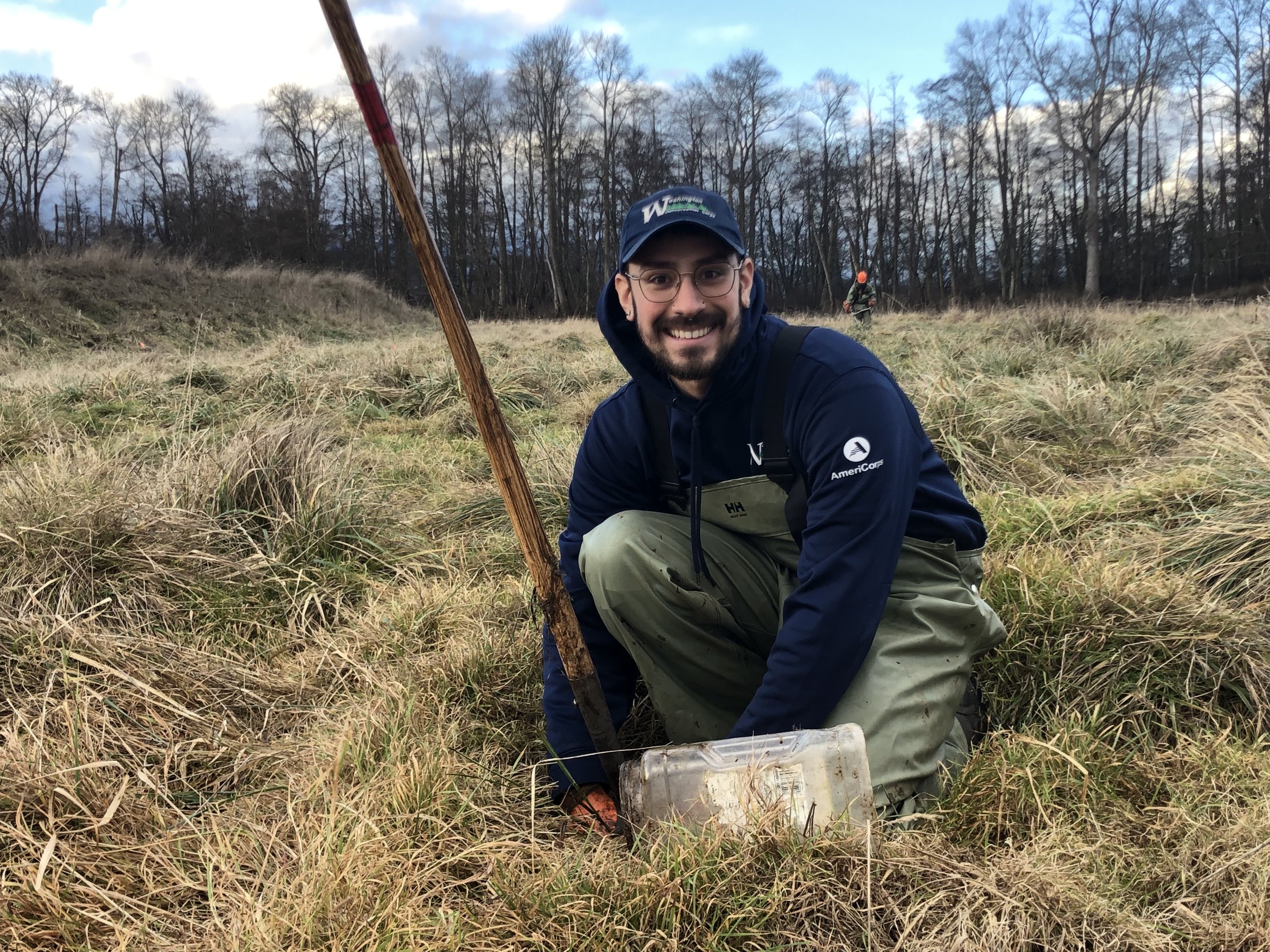
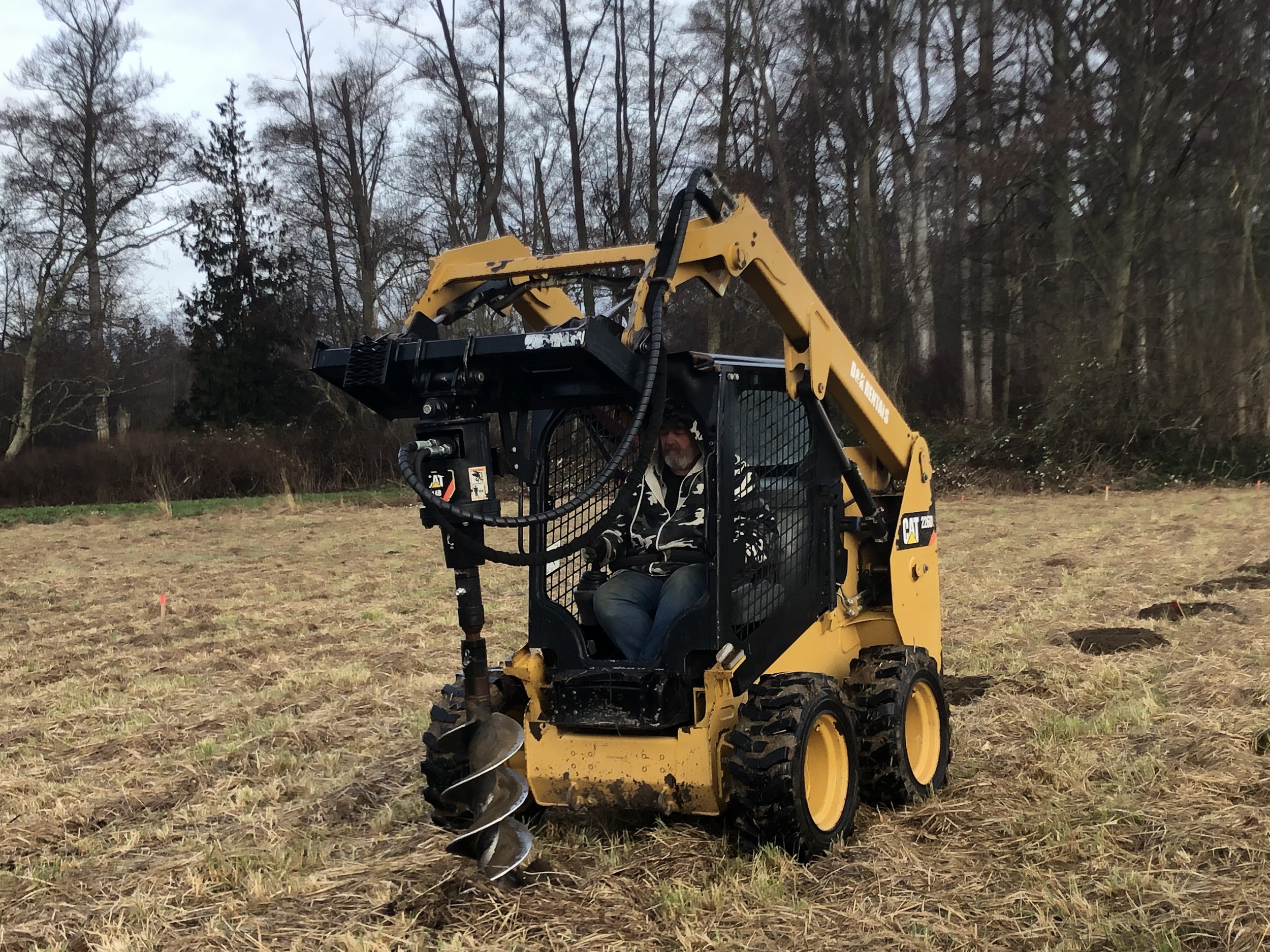
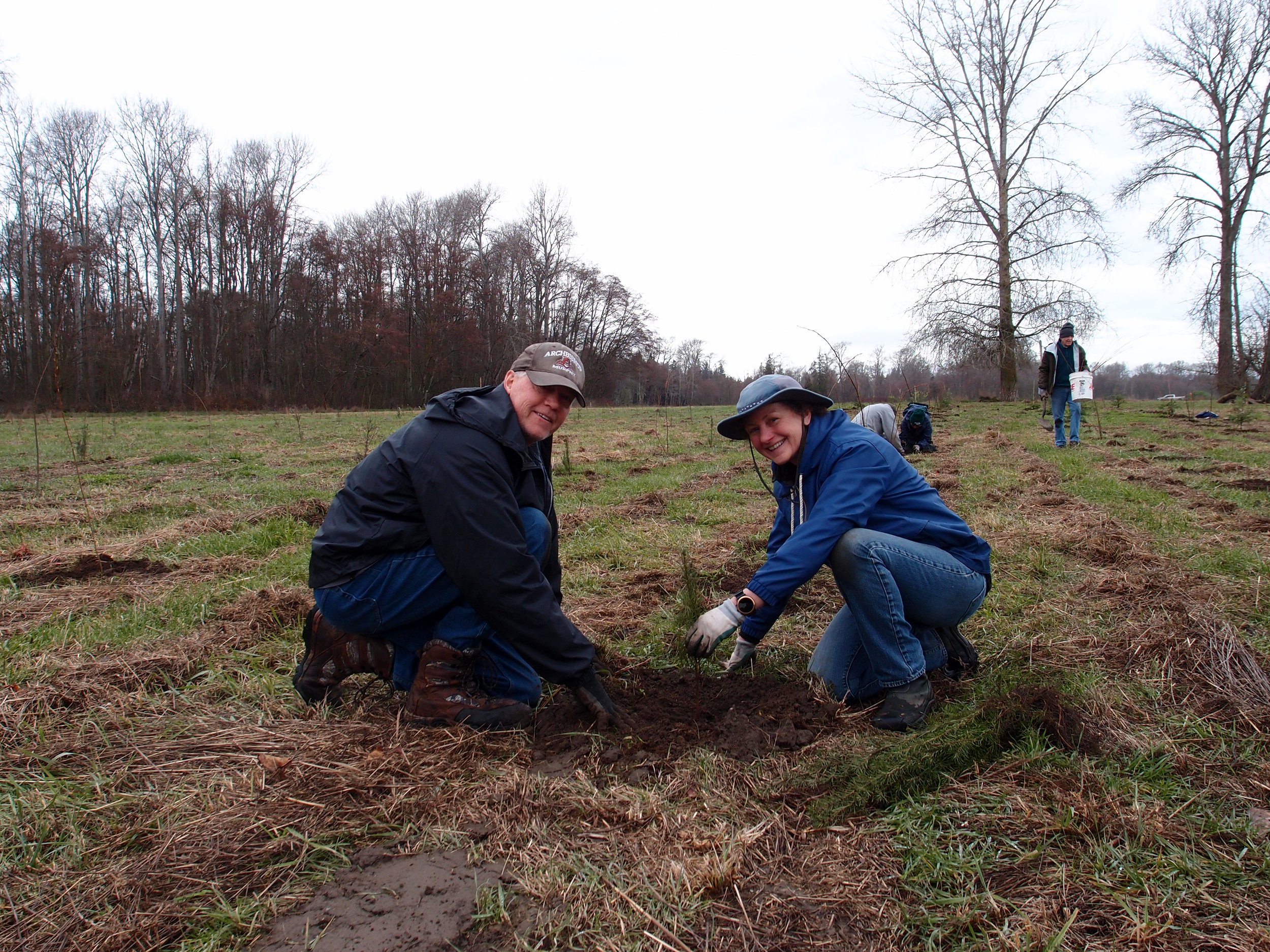
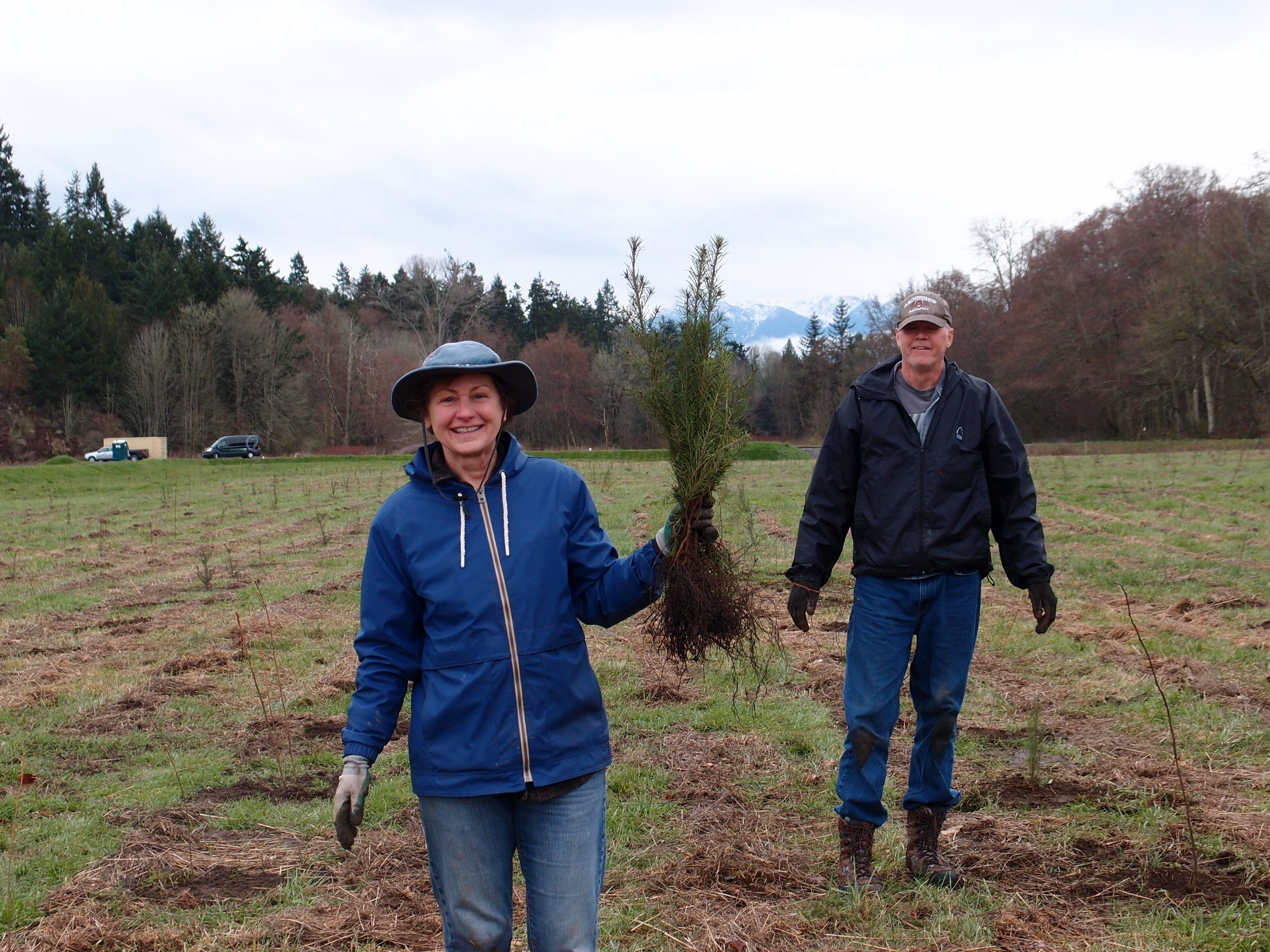

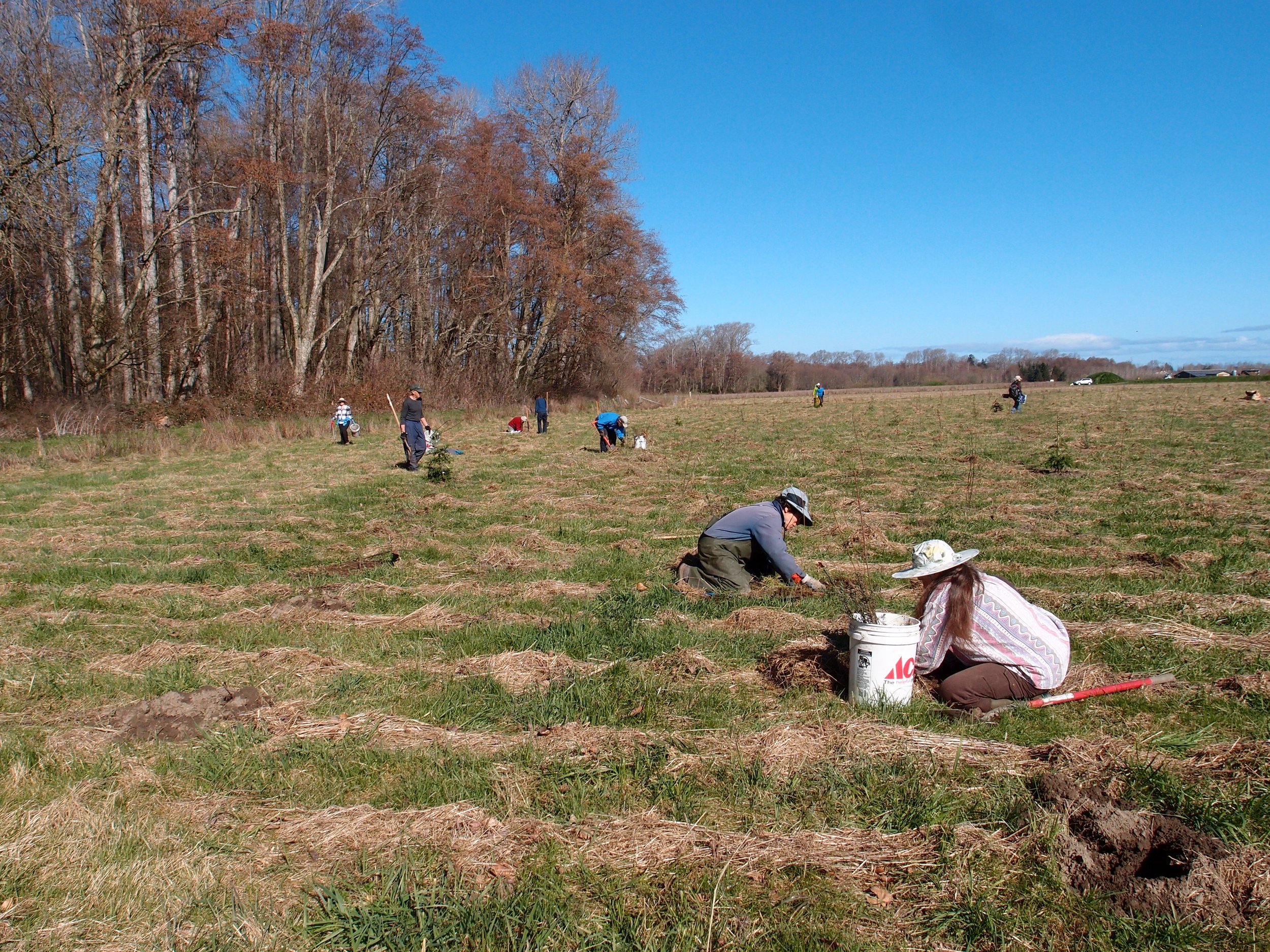

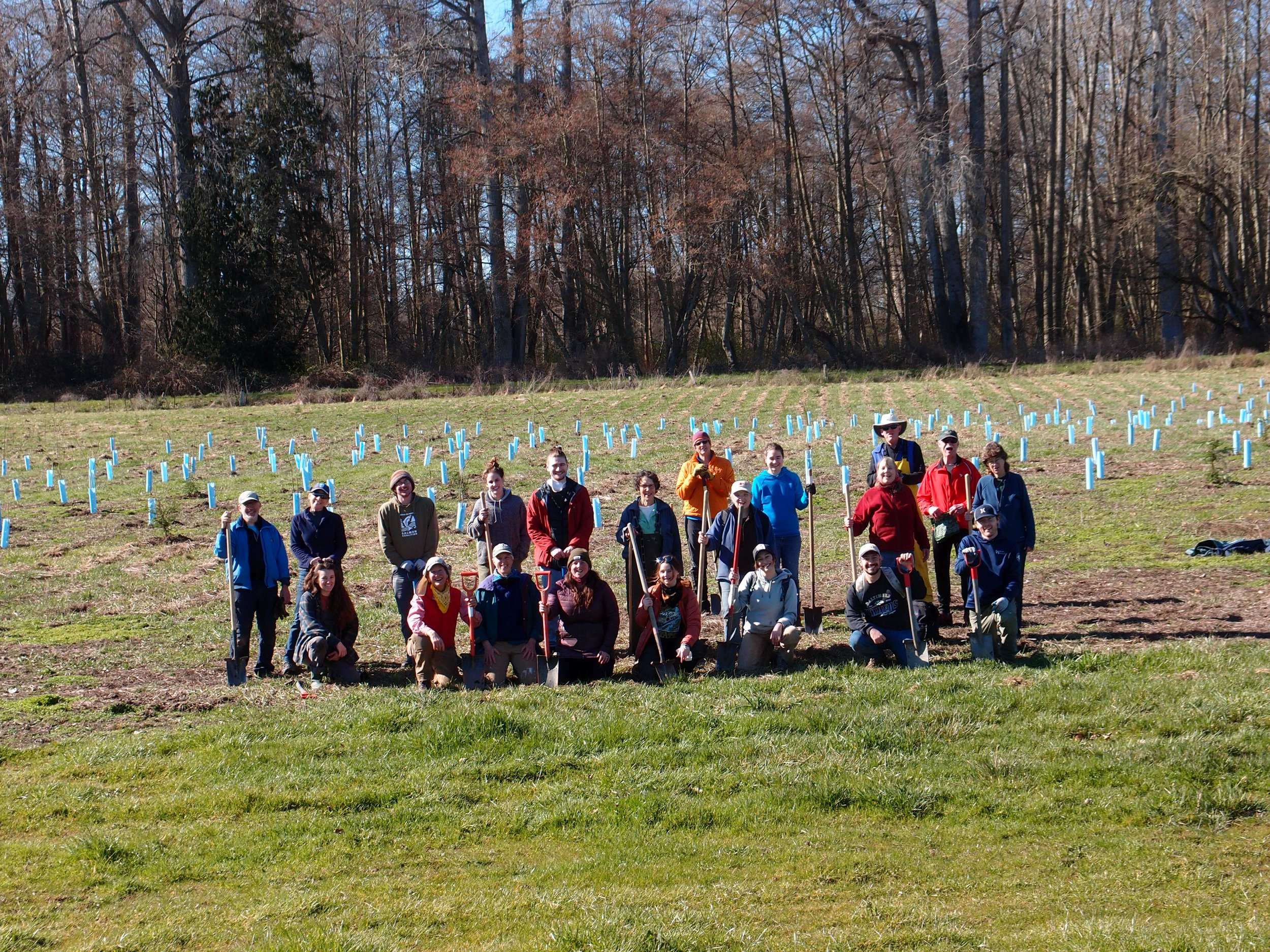
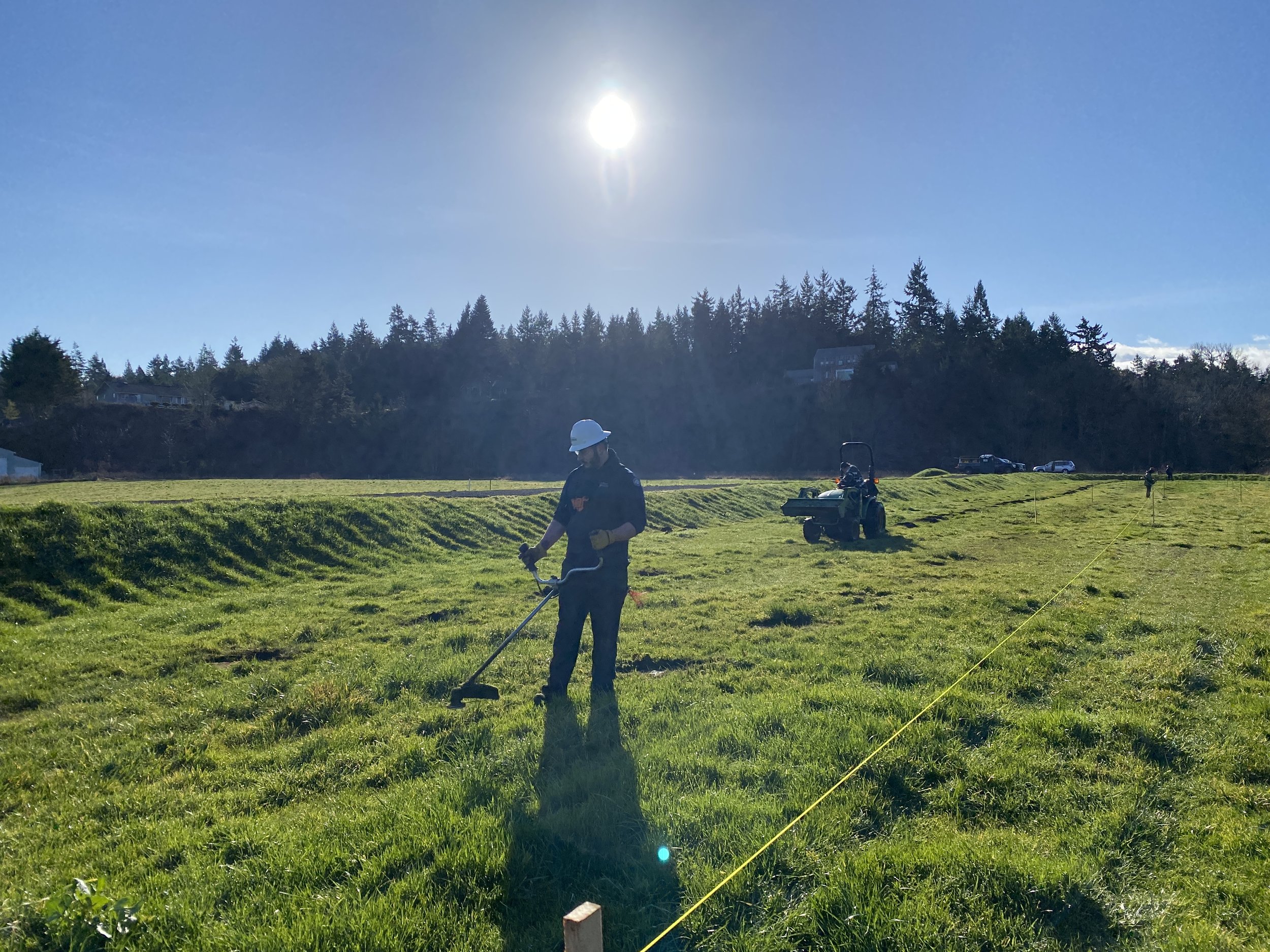
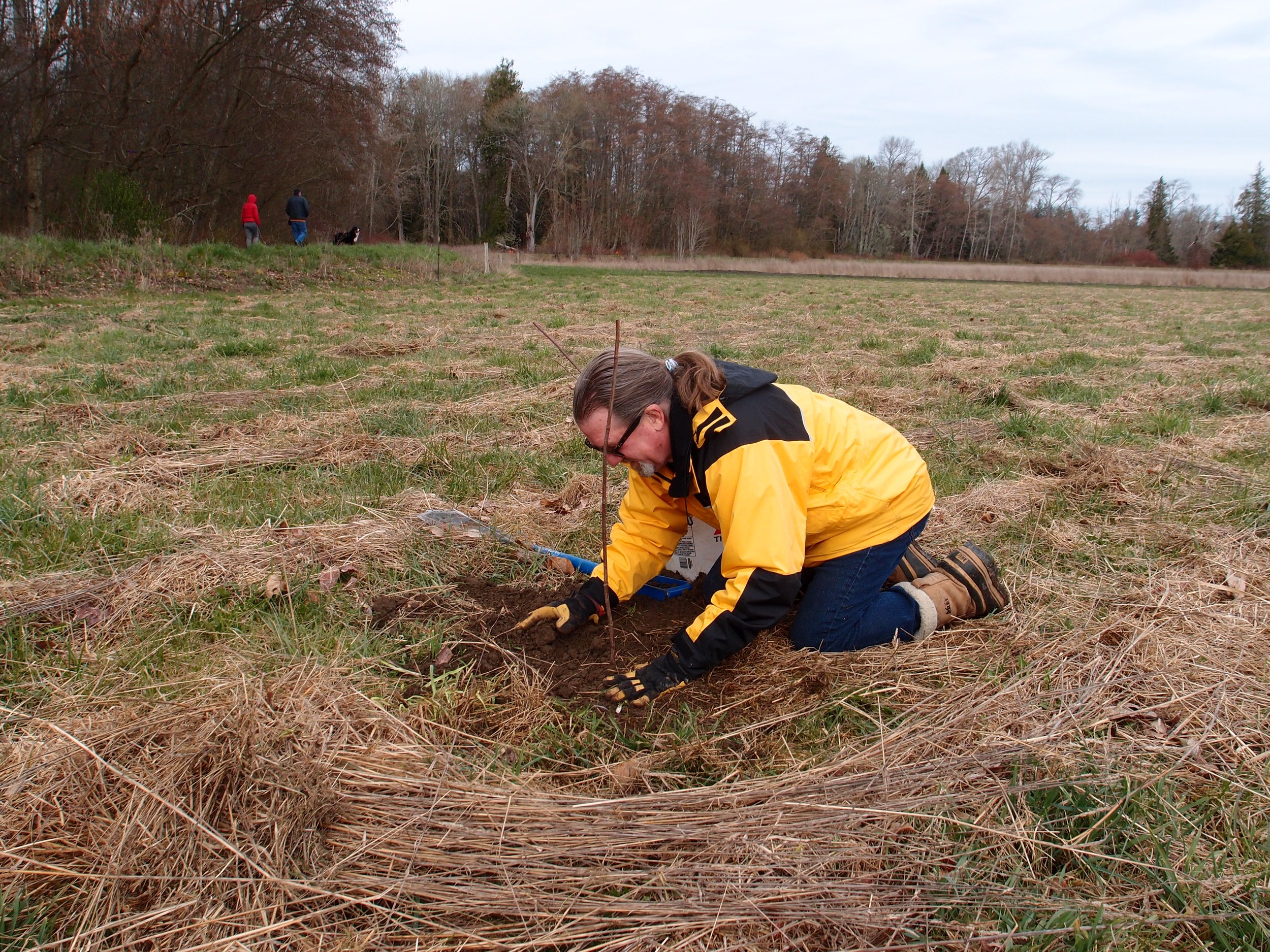
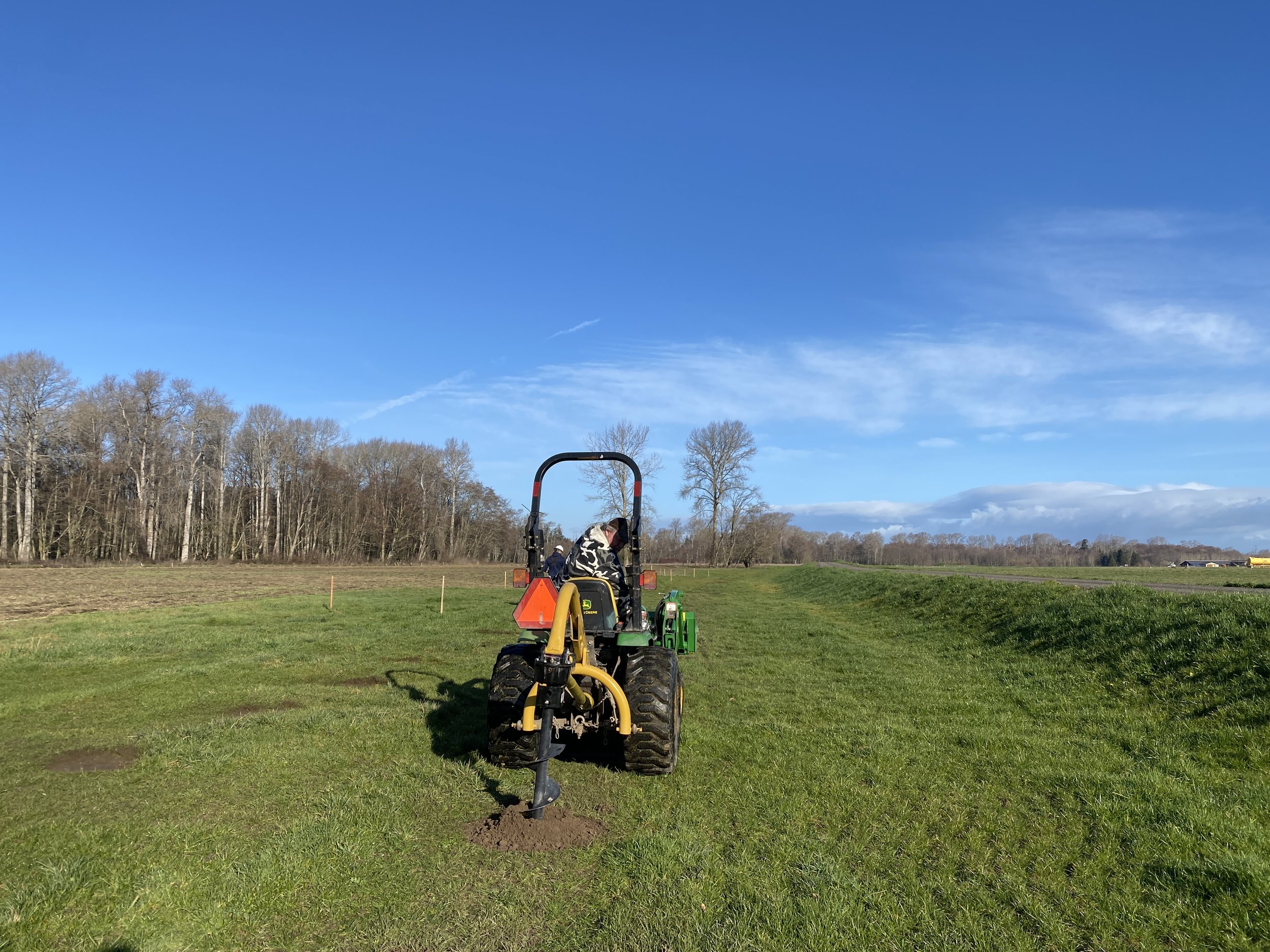
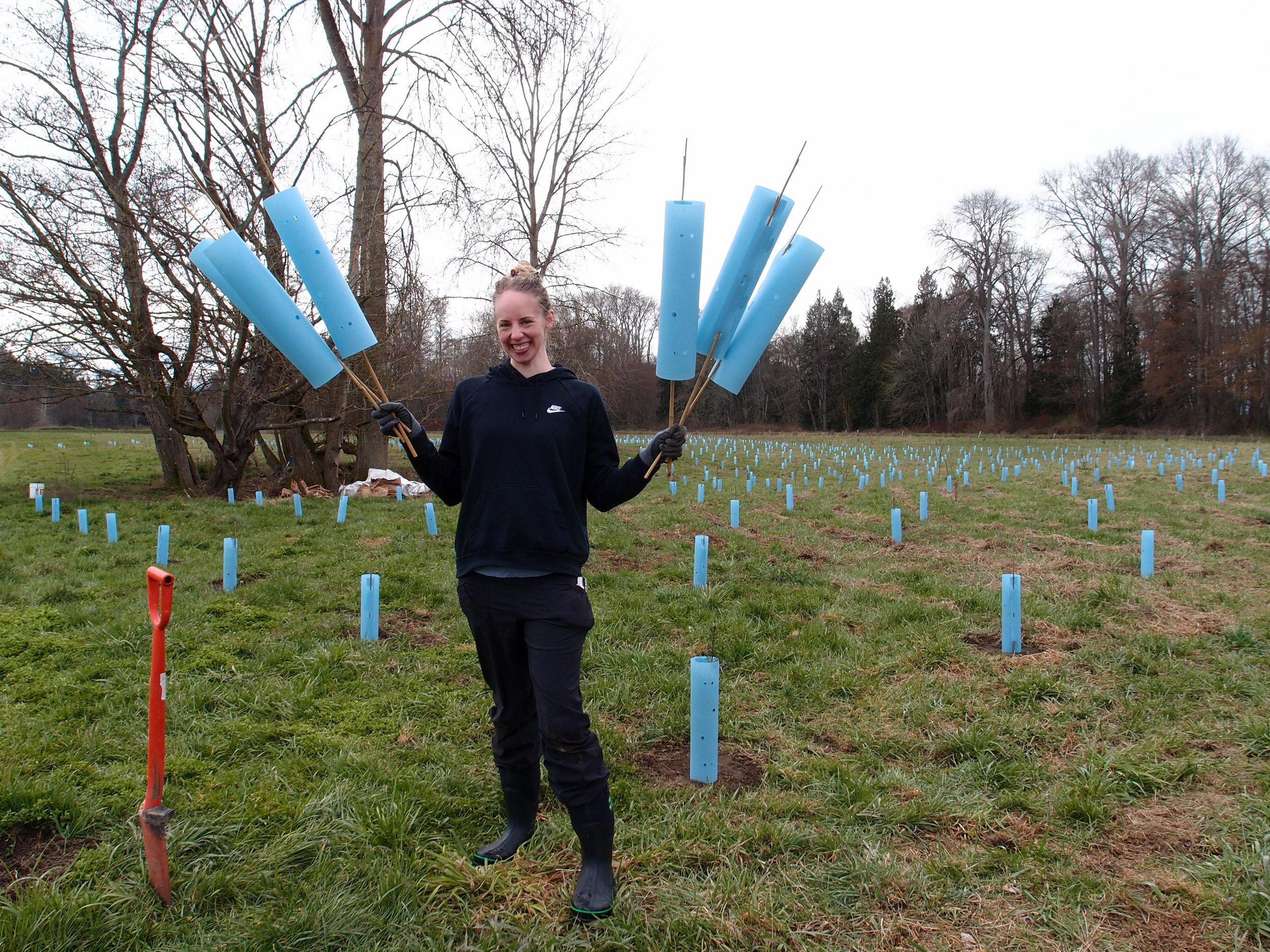
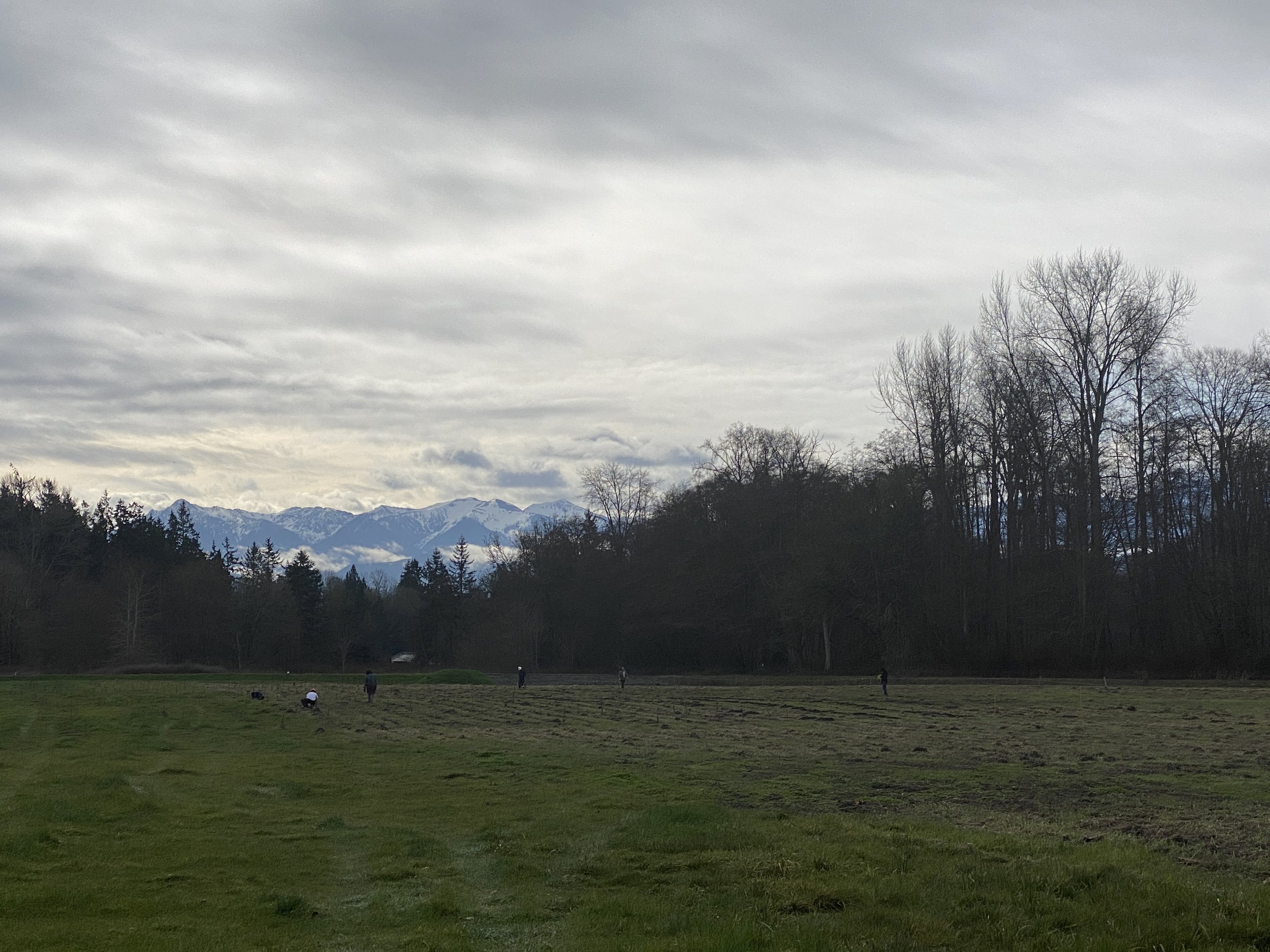
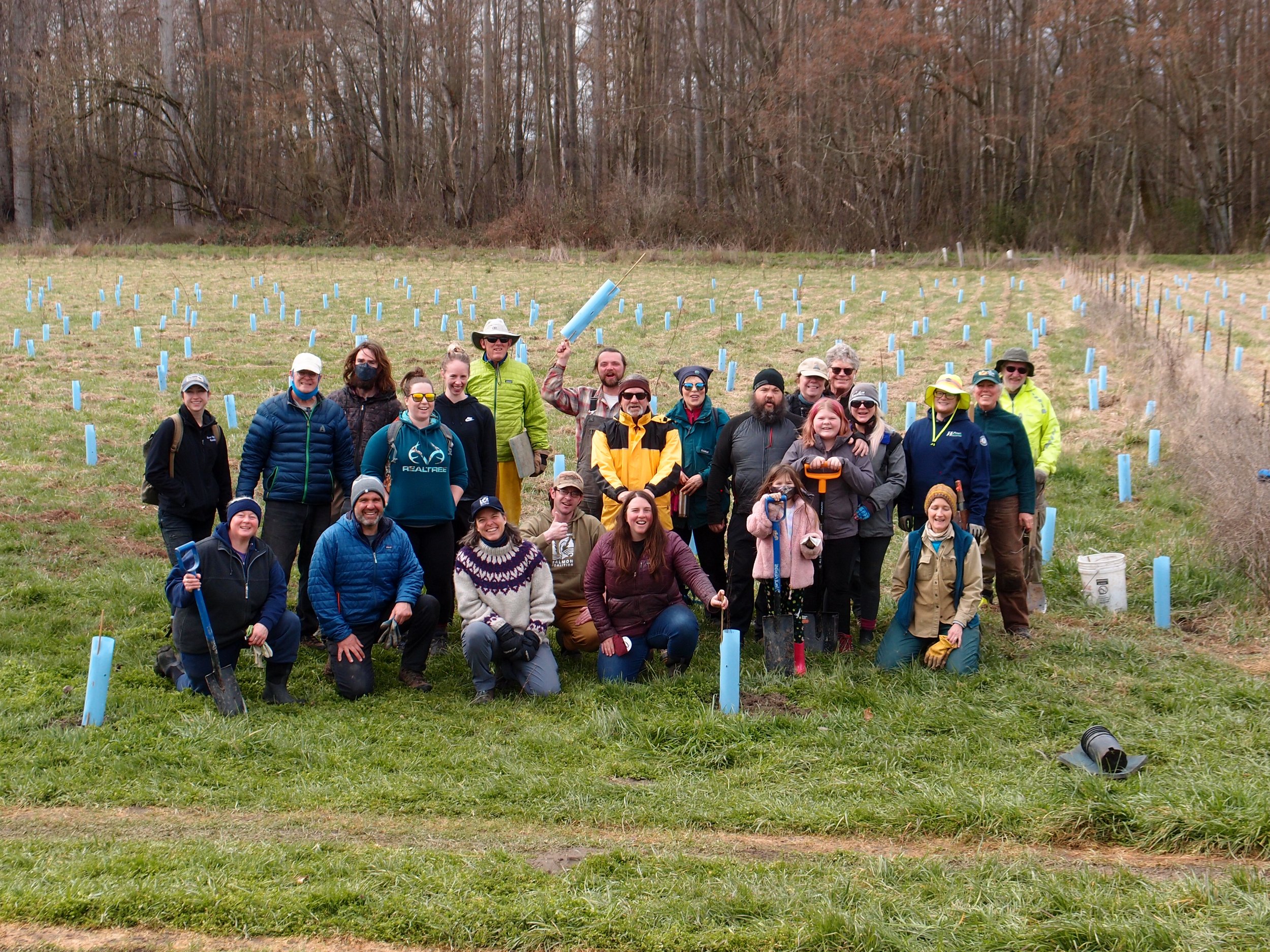
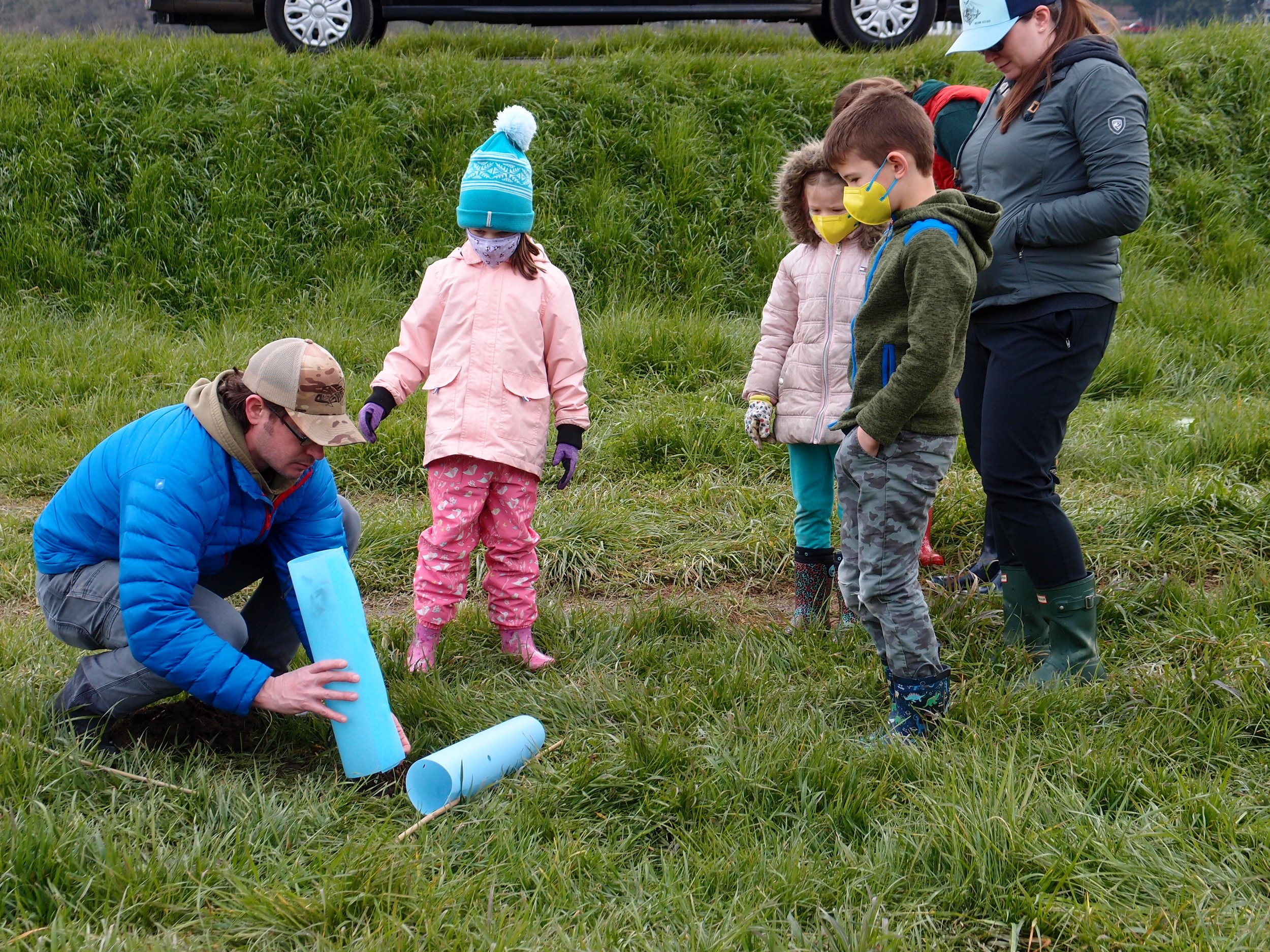
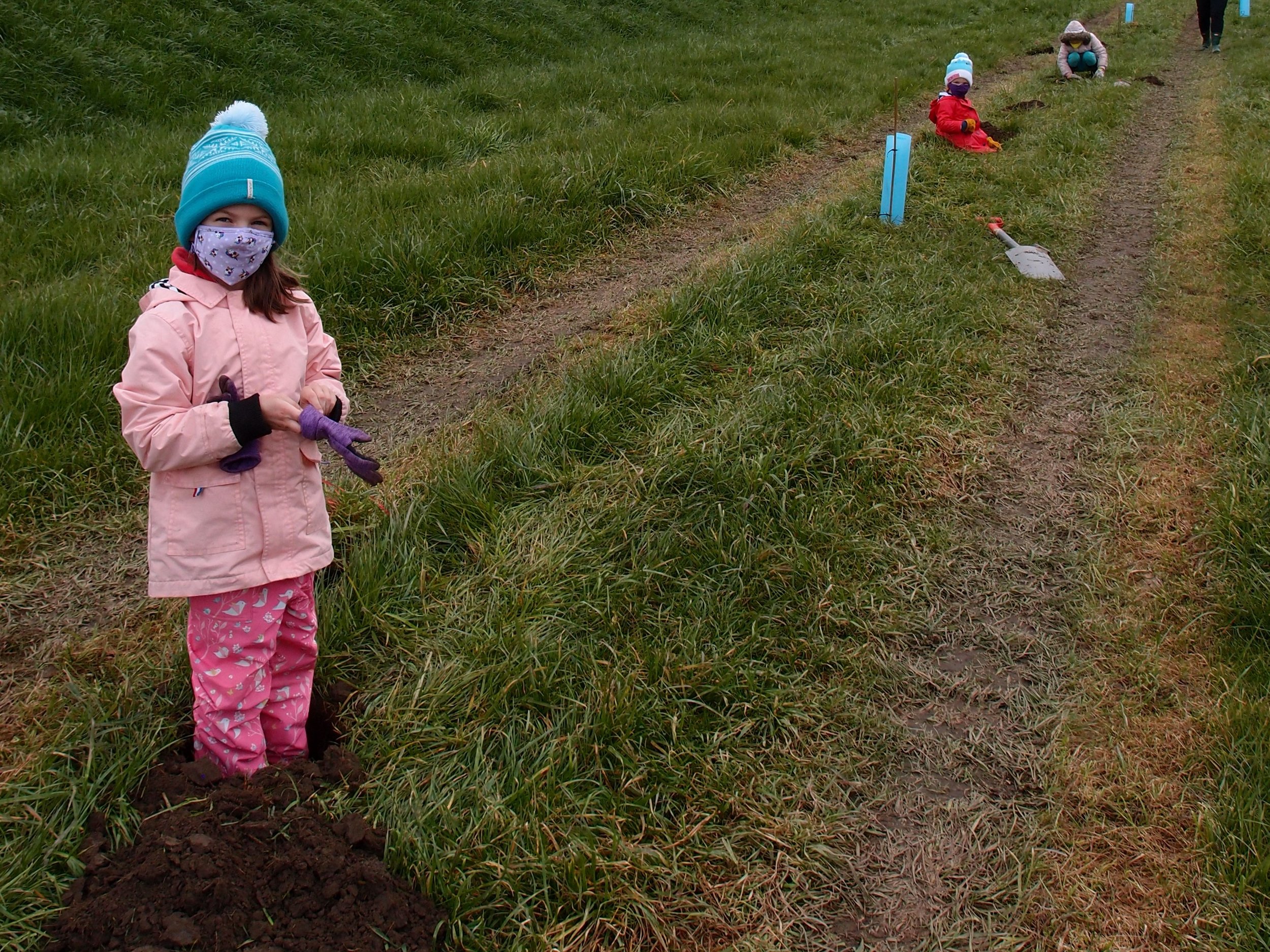
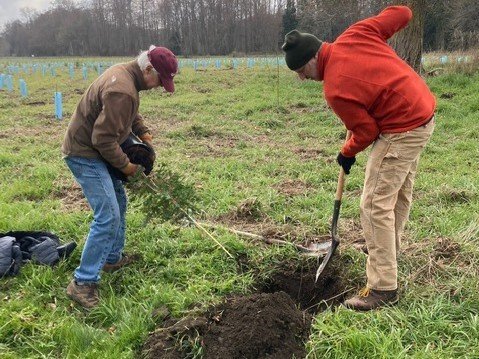
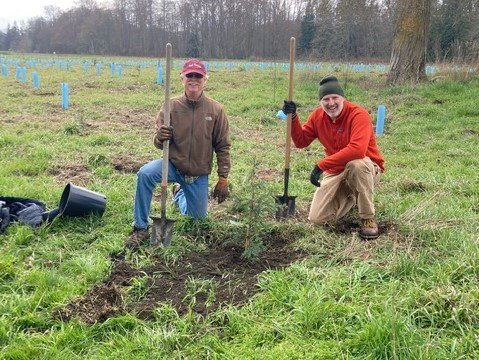
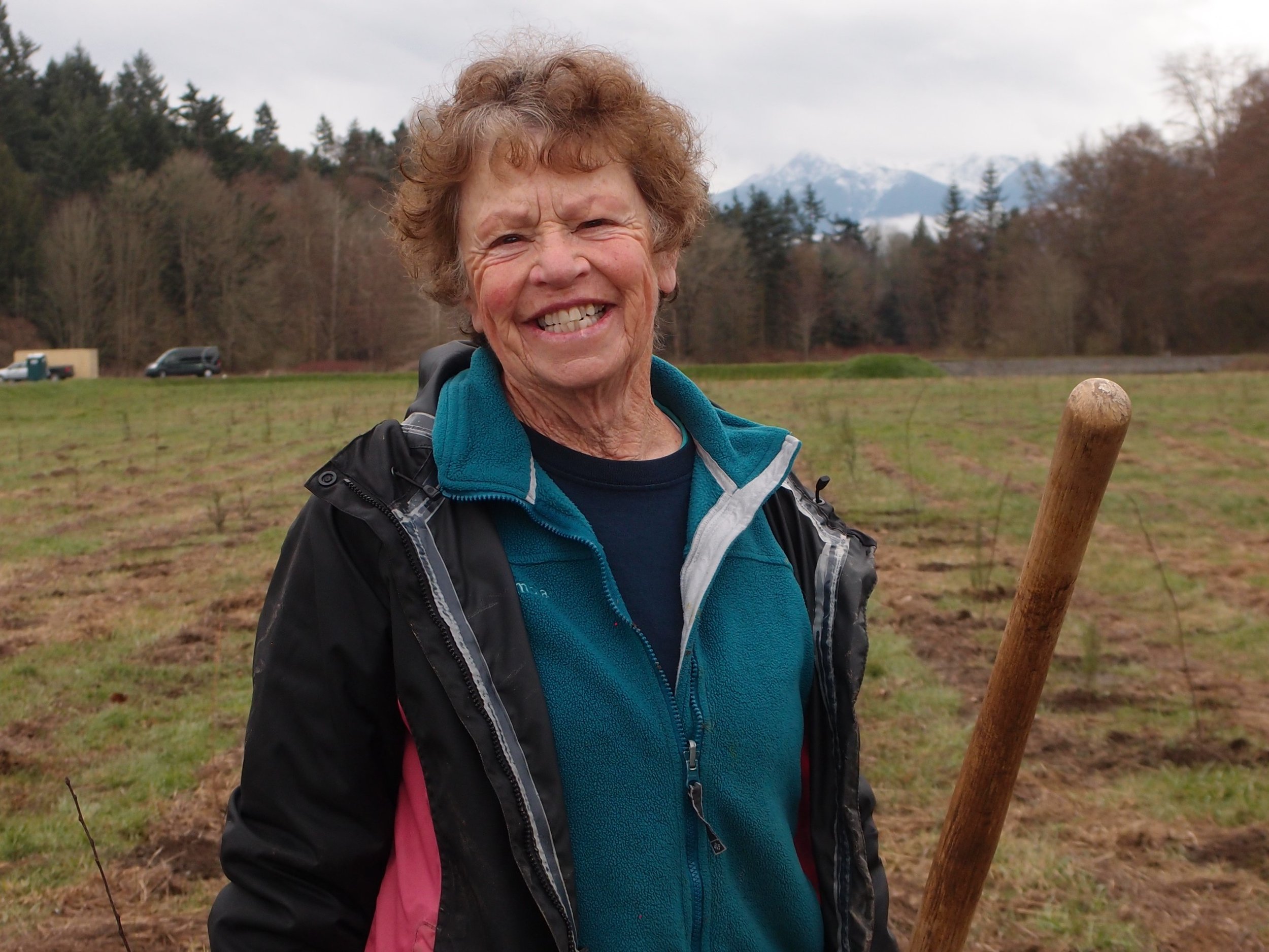
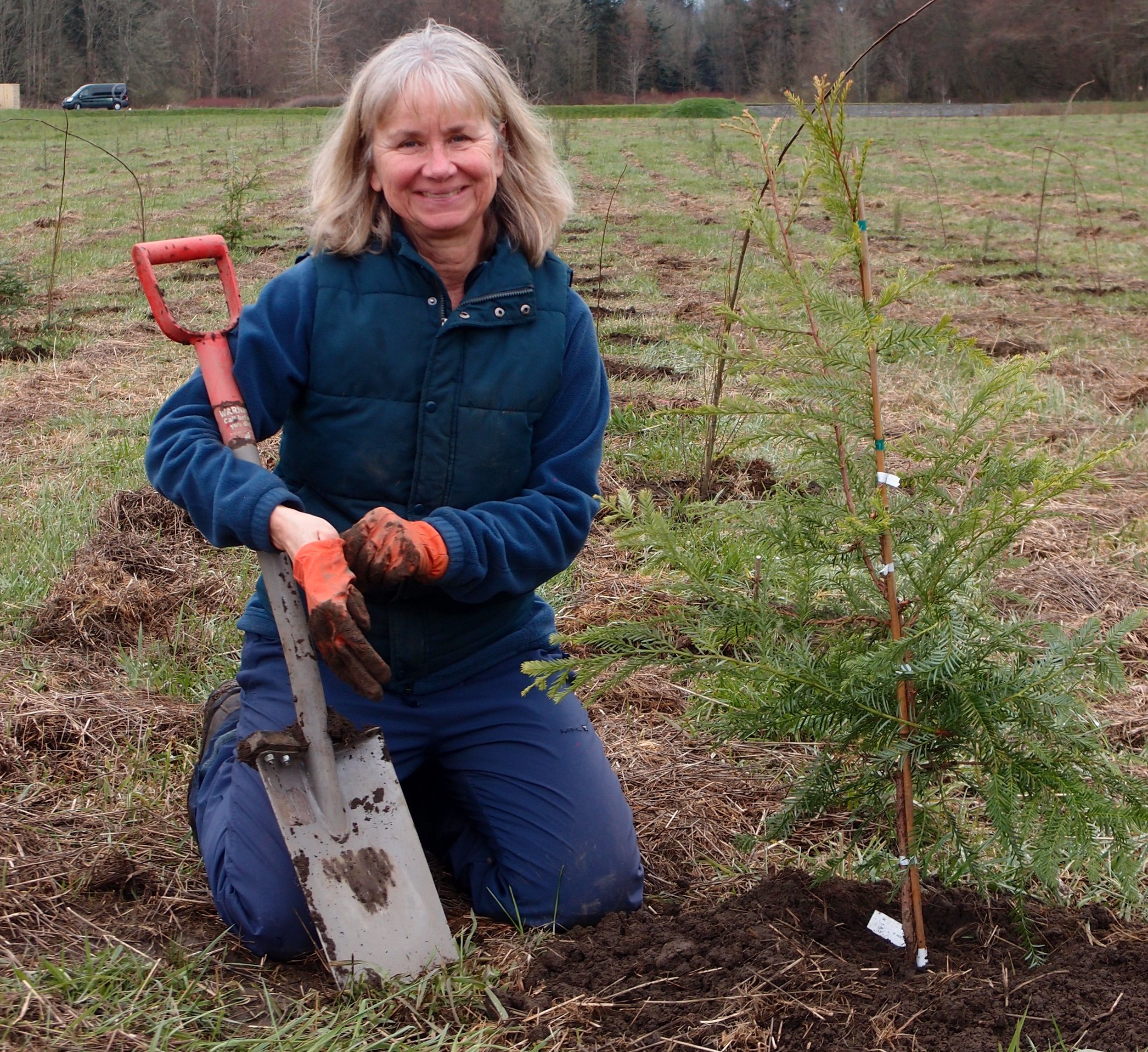
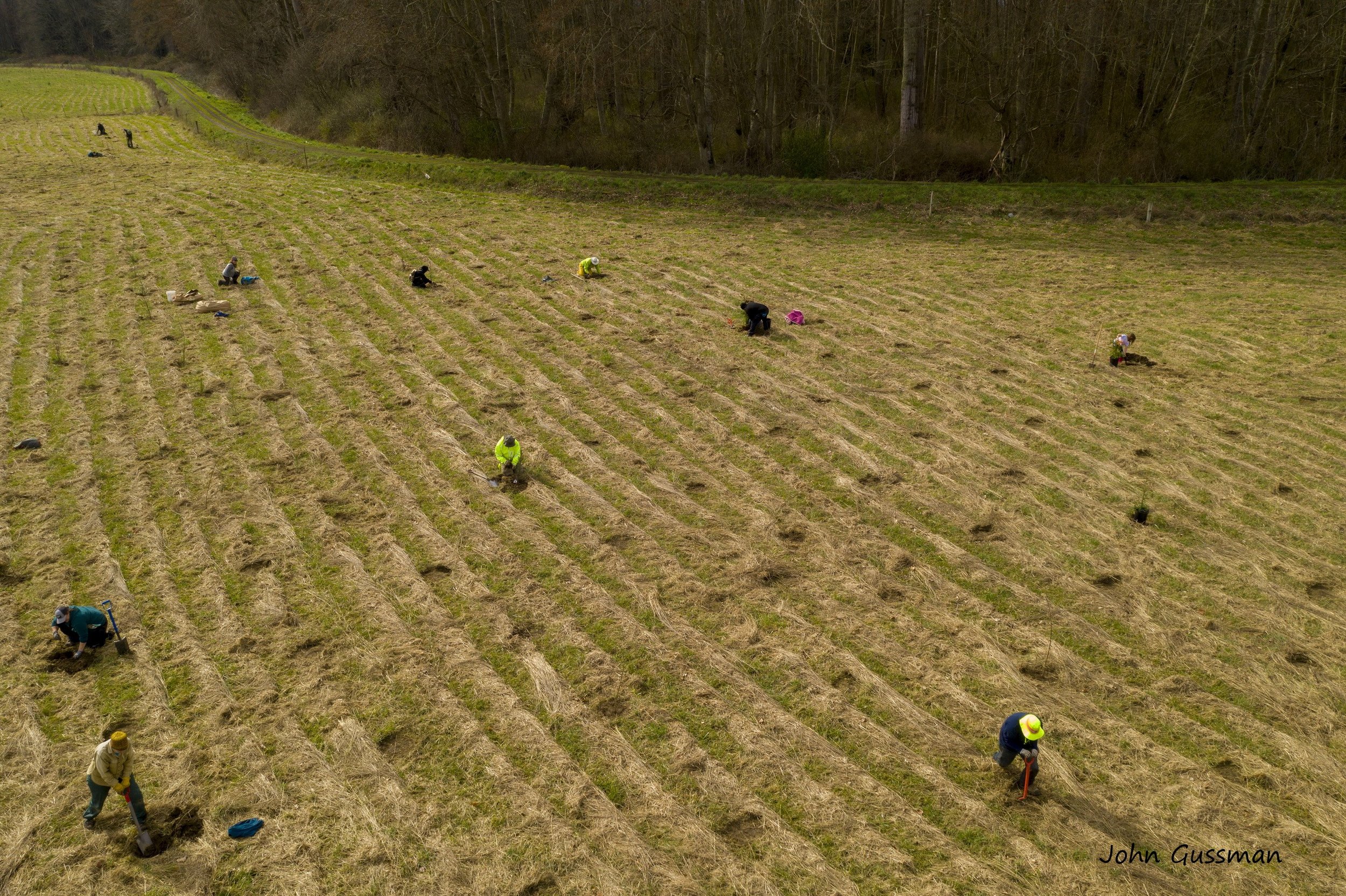

Clallam Conservation District is excited to continue our partnership with the Jamestown S’Klallam Tribe, to help to revegetate a site known as Rivers Edge, a 56-acre floodplain that is now connected to the Dungeness River with completion of removal of an old levee in the summer of 2022.
The first phase of revegetation at Rivers Edge wrapped up last year in mid-March 2022. This phase consisted of a 13.3-acre planting of over 7,500 native trees and shrubs with installation of 7,500 blue tube plant protectors as well, which will help to protect plants from damage by small rodents, as well as weedwhackers when maintenance crews remove competing vegetation. The planting was done in large-part by a Washington Conservation Corp (WCC) crew, with four volunteer work parties led by Clallam Conservation District and the North Olympic Salmon Coalition, helping fill in gaps. We were honored that 77 volunteers donated 229 hours of their time to plant 1,520 native trees and shrubs, and install 1,850 plant protectors at Rivers Edge in March of 2022. We truly couldn’t have completed this phase of the restoration without their help, and we look forward to more community volunteer events during subsequent phases of the revegetation over the next few years.
For the second phase of revegetation at Rivers Edge, we made an ambitious goal to plant 30-acres with 15,150 trees and shrubs, and we MET THAT GOAL! The planting was done entirely by two WCC crews that started in January and finished in early February. The crews were able to get the plants in fast thanks to the efforts of Steve of the Jamestown S’Klallam Tribe, who helped mow the planting field and augured holes for the crews to plug in plants. The plants consisted of a mixture of conifers, deciduous trees and shrubs.
The 56-acre floodplain, referred to as Rivers Edge makes up a portion of the total floodplain that is now connected to the Dungeness River with completion of the Lower Dungeness River levee setback project in the summer of 2022. The Jamestown S’Klallam Tribe and Clallam County worked together on this project to reconnect the Dungeness River to 143-acres of floodplain by removing a 50-year old US Army Corps of Engineers levee, and building 2,600 feet of new levee that is set back from the river's edge. The setback will allow the river to meander and connect to its historic floodplain, creating a much healthier river ecosystem.
When a river is disconnected from its floodplain the water becomes channelized and moves at a high velocity. This high velocity creates scour in the channel bed causing erosion and stream incision. High flows without side channels and a floodplain to distribute the energy of the water can destroy salmon redds (nests), by smothering them with sediment which can prohibit oxygen exchange with the eggs and result in mortality.
Reconnecting the Dungeness River to its floodplain will help create more spawning habitat for salmon species. The levy setback will allowing the river to meander and create side channels, which are preferred habitat for Pacific salmon. The side channels create complexity in the river by creating pools and riffles, and are refuge areas for juvenile salmon, especially during flooding. They also help to reorganize the river gravel to create excellent spawning areas for returning adults. Revegetation of these areas is very important as well. As trees and shrubs in the floodplain mature, they create instream islands which accumulate large woody debris that slows flows and captures sediment, creating excellent salmon habitat. This project will benefit four fish species listed on the Endangered Species Act (ESA) List, Puget Sound Chinook, Hood Canal summer chum, Puget Sound steelhead, and bull trout, as well as several other salmon species, and many other aquatic and terrestrial species.
Additionally, restoring floodplain function will help improve water quality to the shellfish beds in Dungeness Bay. Dungeness Bay has long struggled with water quality issues resulting in permanent shellfish bed closures in some areas. The side channels will capture sediment that could transport to Dungeness Bay, compromising shellfish productivity. As the floodplain vegetation matures it will shade the river, cooling water temperatures, allowing for more dissolved oxygen in the river. This improvement in water quality will also help the downstream shellfish beds.
We are so happy to be partnering with the Jamestown S’Klallam Tribe to be a part of this historic project, and look forward to seeing the many changes the river will make in the upcoming years.

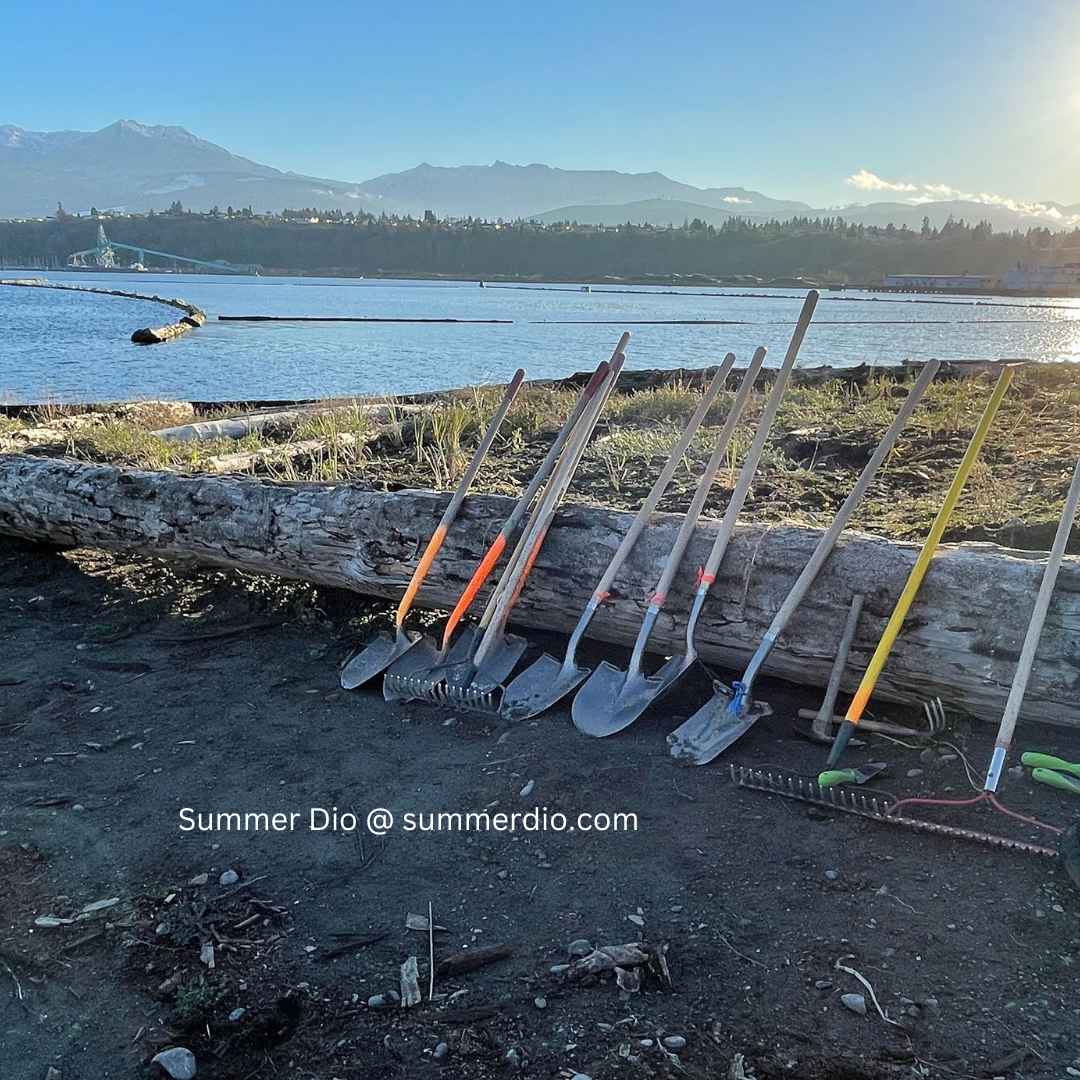
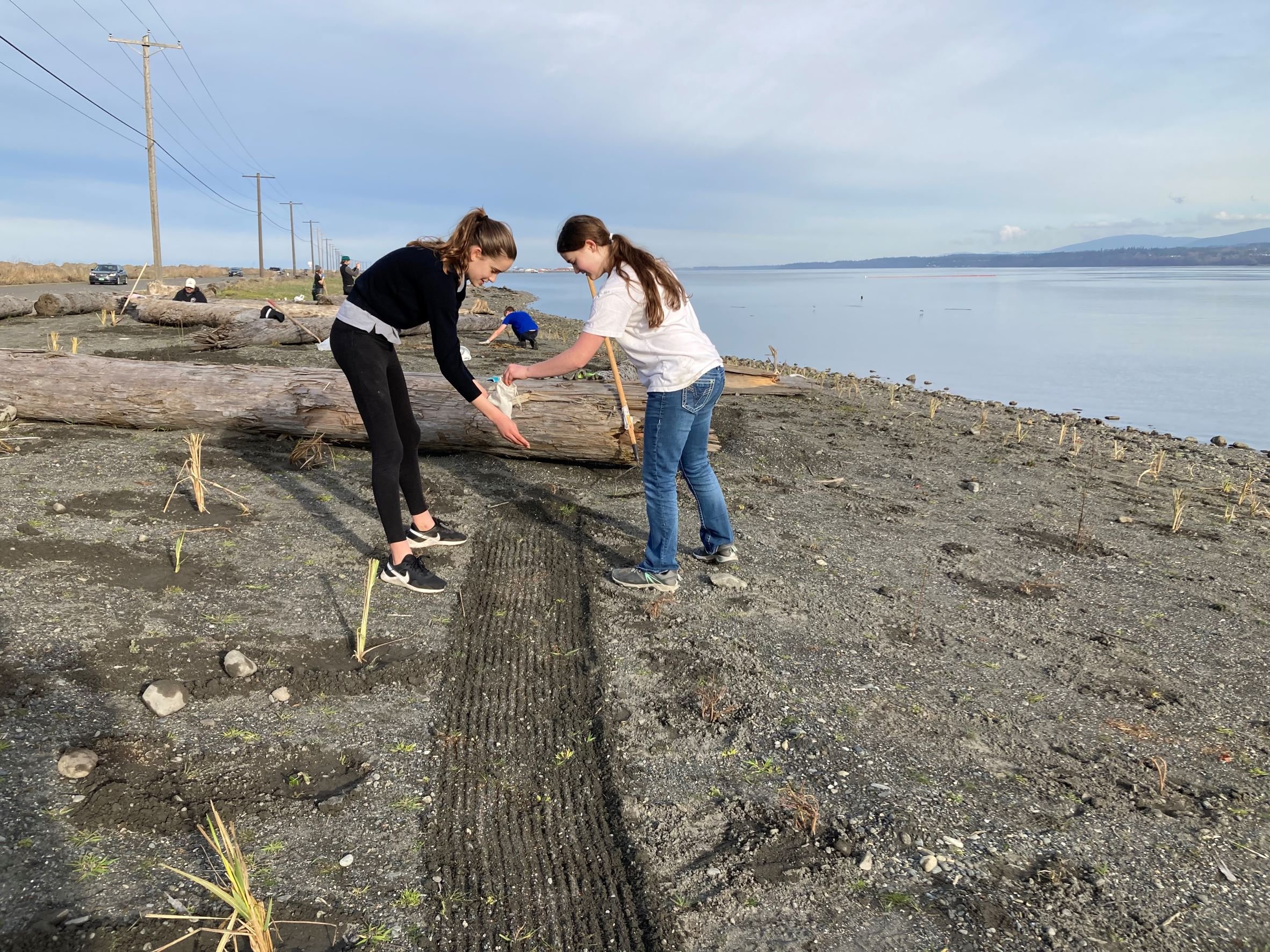

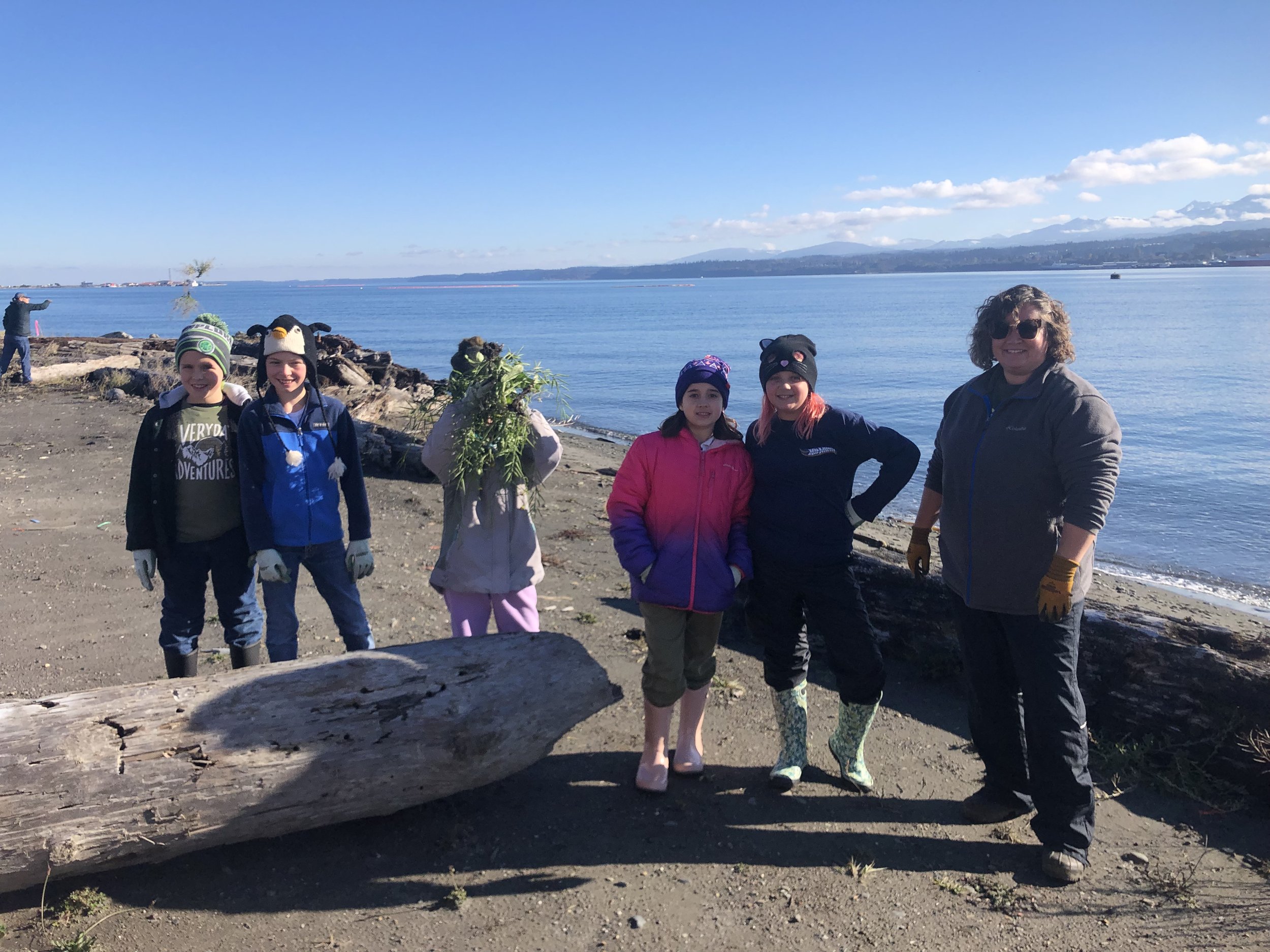
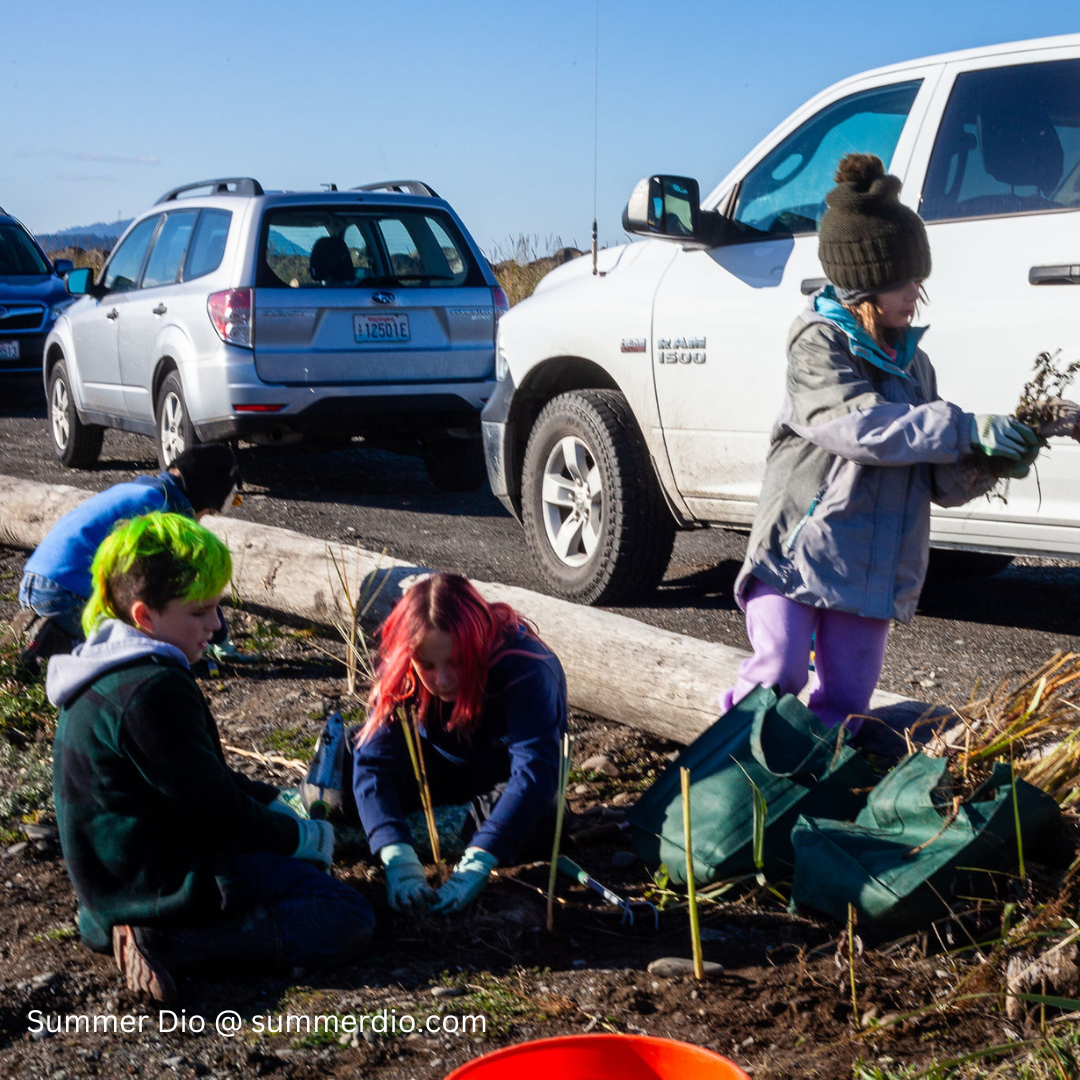



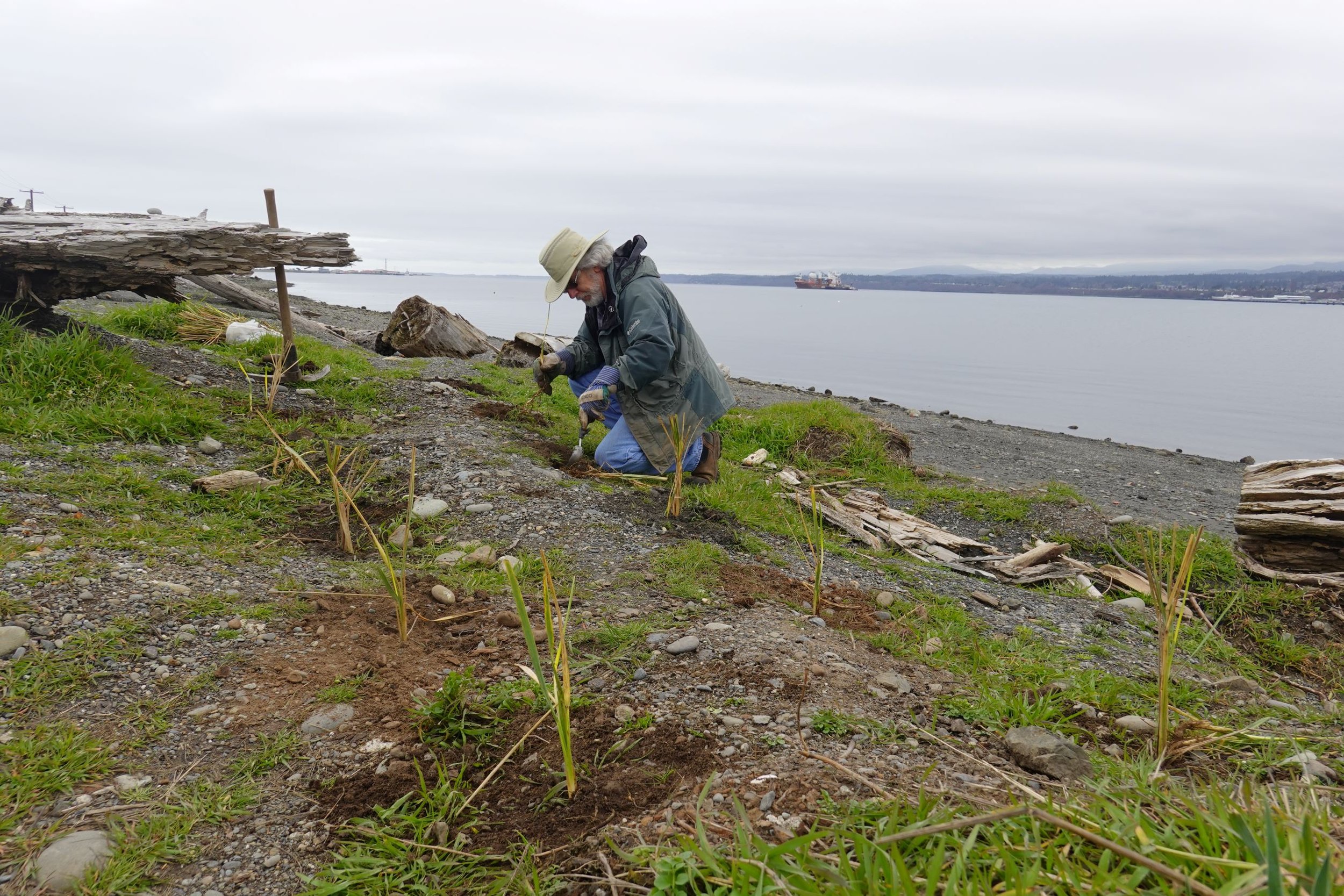
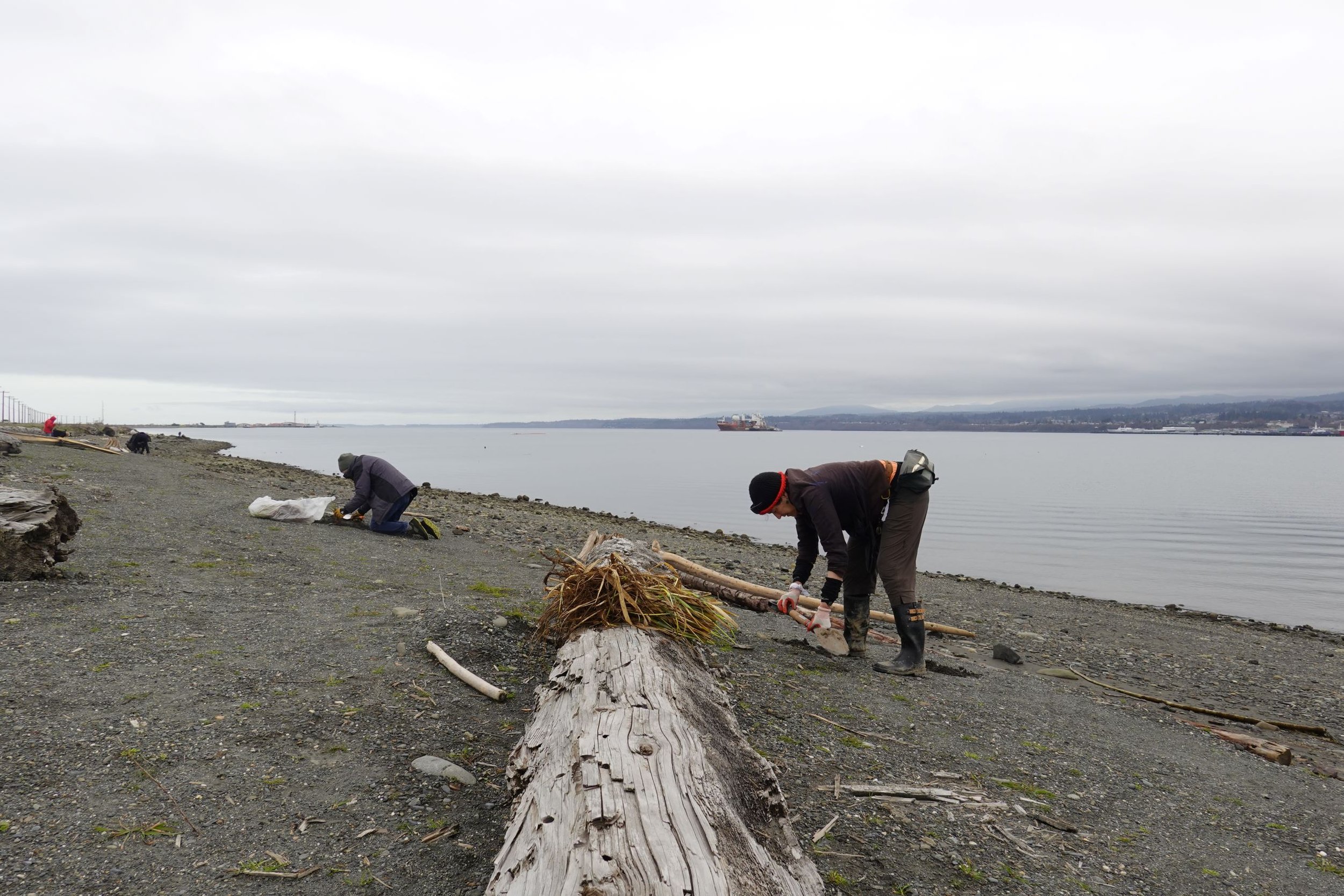
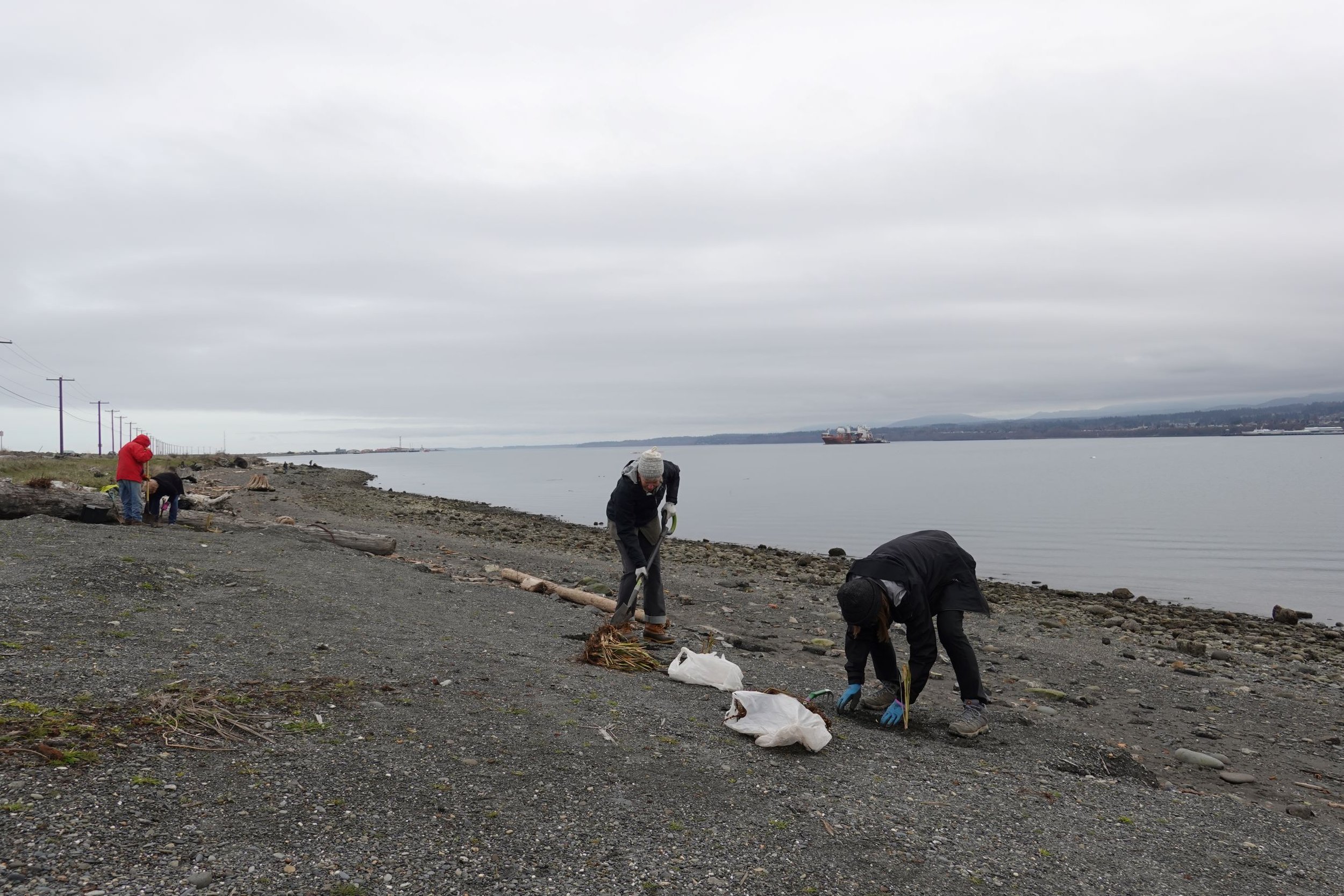
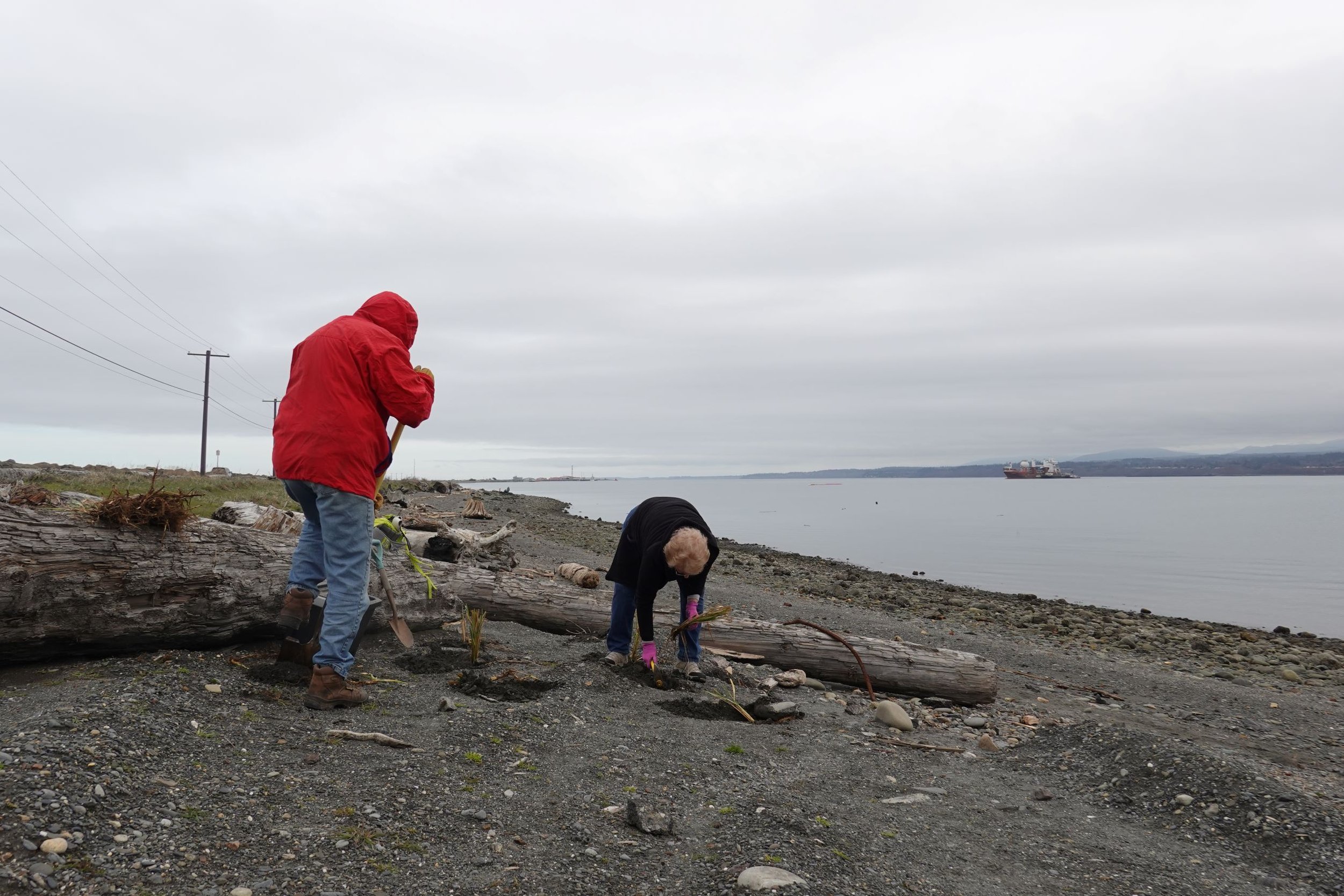
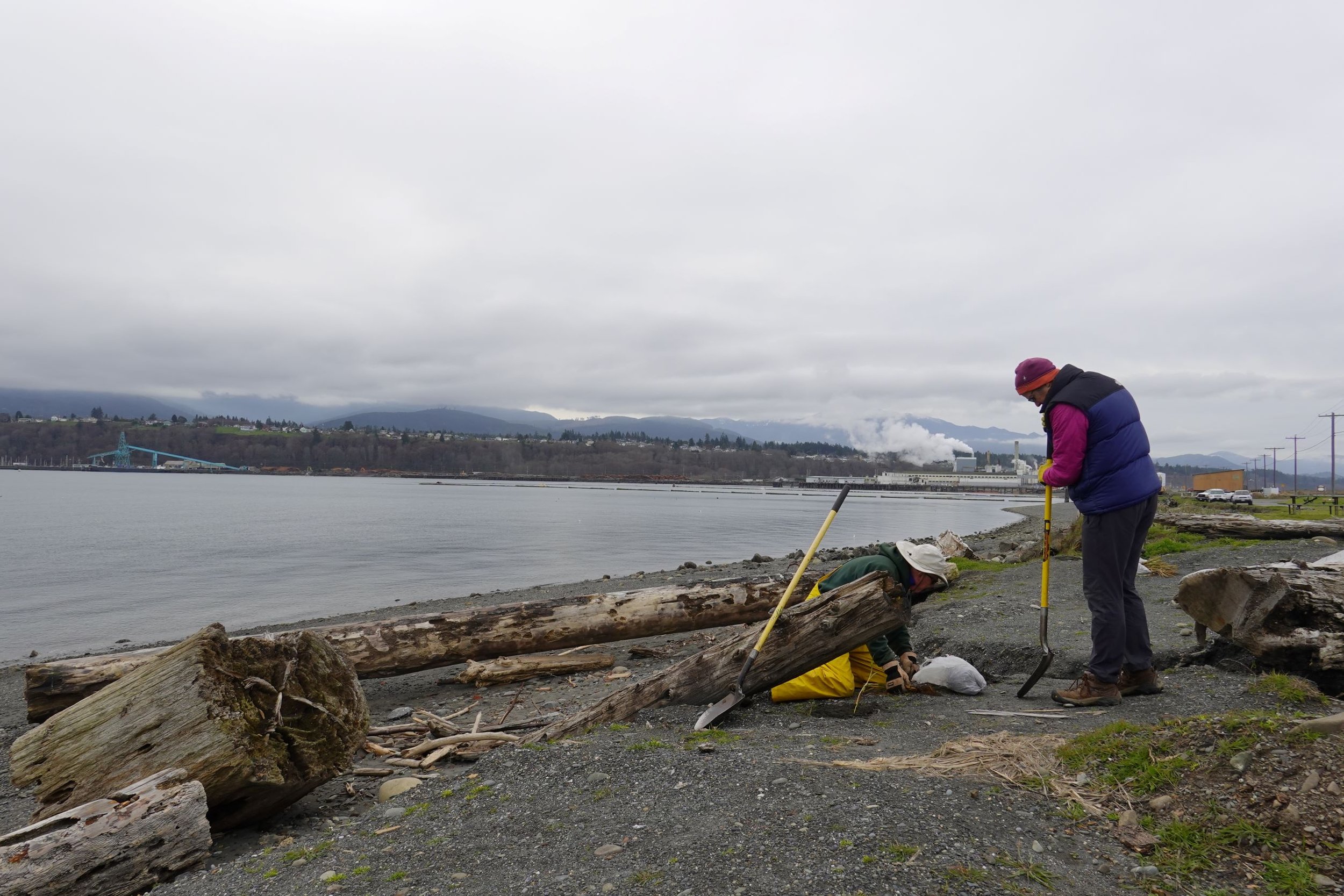


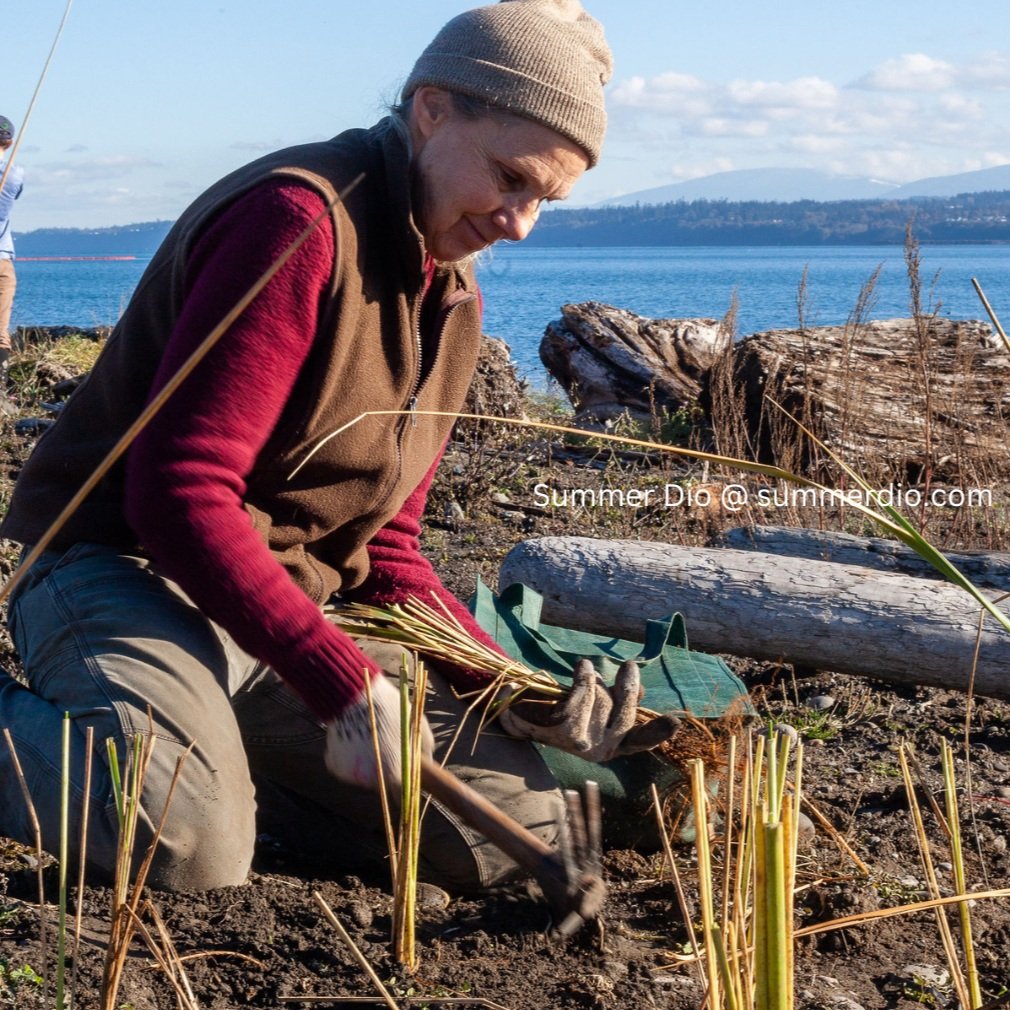
Ediz Hook Planting
An incredible amount of volunteers, 28 to be exact, turned out in March of 2022 to help Clallam Conservation District and the Lower Elwha Klallam Tribe (LEKT) plant 1,700 native dune grass starts and approximately 10 other beach restoration plant species on Ediz Hook to establish vegetation following a restoration project LEKT completed in 2021. The project is one phase of many that involved removing piers and shoreline armoring such as concrete, riprap and metal, and replacing it with logs and beach sand. The goal of this project is to improve habitat for forage fish, salmon and marine birds, as well as enhance recreation opportunities at Ediz Hook.
Another planting took place at Ediz Hook for one of our Orca Recovery events on November 9, 2022. In a collaboration between the District and the Lower Elwha Klallam Tribe, we had 20 volunteers come out to plant 1,400 native beach species. It was a beautiful day and a nice way to cap off our Orca Recovery Events. Learn more about our Orca Recovery Events here.
Lake Aldwell Reservoir Planting (Elwha River Planting)
Locally, Clallam Conservation District and the Lower Elwha Klallam Tribe are teaming up to support orca recovery by focusing restoration efforts on the Elwha River. The removal of the Lower Elwha Dam in 2011 and the upper Glines Canyon Dam in 2014 gave unrestricted passage to Chinook salmon, as well as other fish species, to make their way through the Elwha River system. The removal of the dams left roughly 600 acres of former lakebeds to return to native forests for the freed up Elwha River to flow through. Harsh growing conditions, such as no top soil, have made establishing conifer trees a challenge in the old lakebeds. Restoration plantings are crucial to help accelerate restoration of fish habitat in the Elwha River for both salmon and orca recovery.
In 2020 volunteers helped plant 2,000 conifer trees in the former Lake Aldwell reservoir for Orca Recovery Day. In October 2021, 59 volunteers planted 2,100 trees and shrubs. For our Orca Recovery Events in 2022, a volunteer planting was done in November of 2022 with 40 volunteers planting 1,400 trees and shrubs along the Elwha River on the former Lake Aldwell. With time, these trees will provide vital shade to the river, and contribute large woody debris to create valuable instream fish habitat. This habitat will benefit the endangered Chinook salmon, as well as other fish species, which in turn will help the plight of the endangered Southern Resident Killer whales.
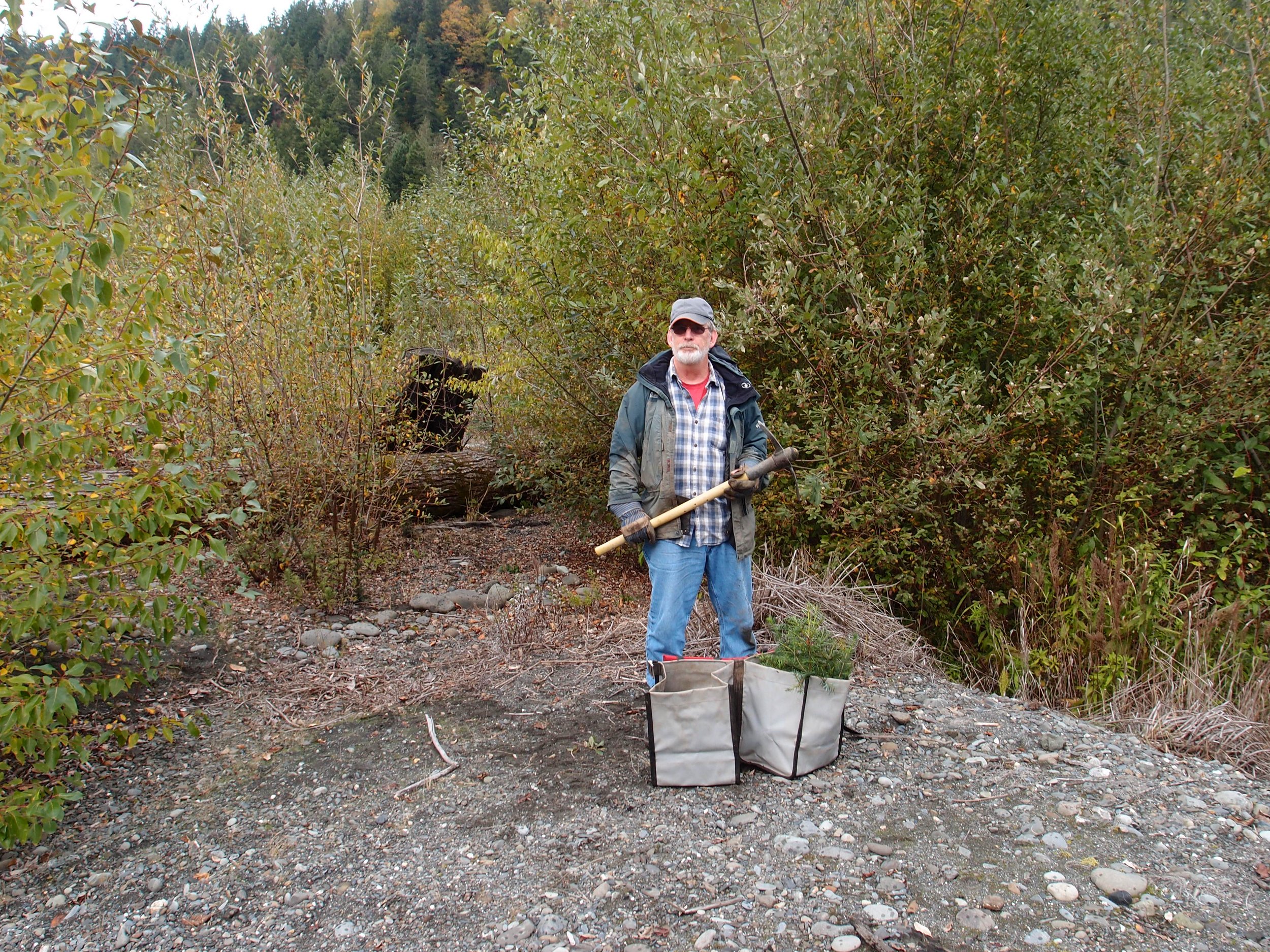
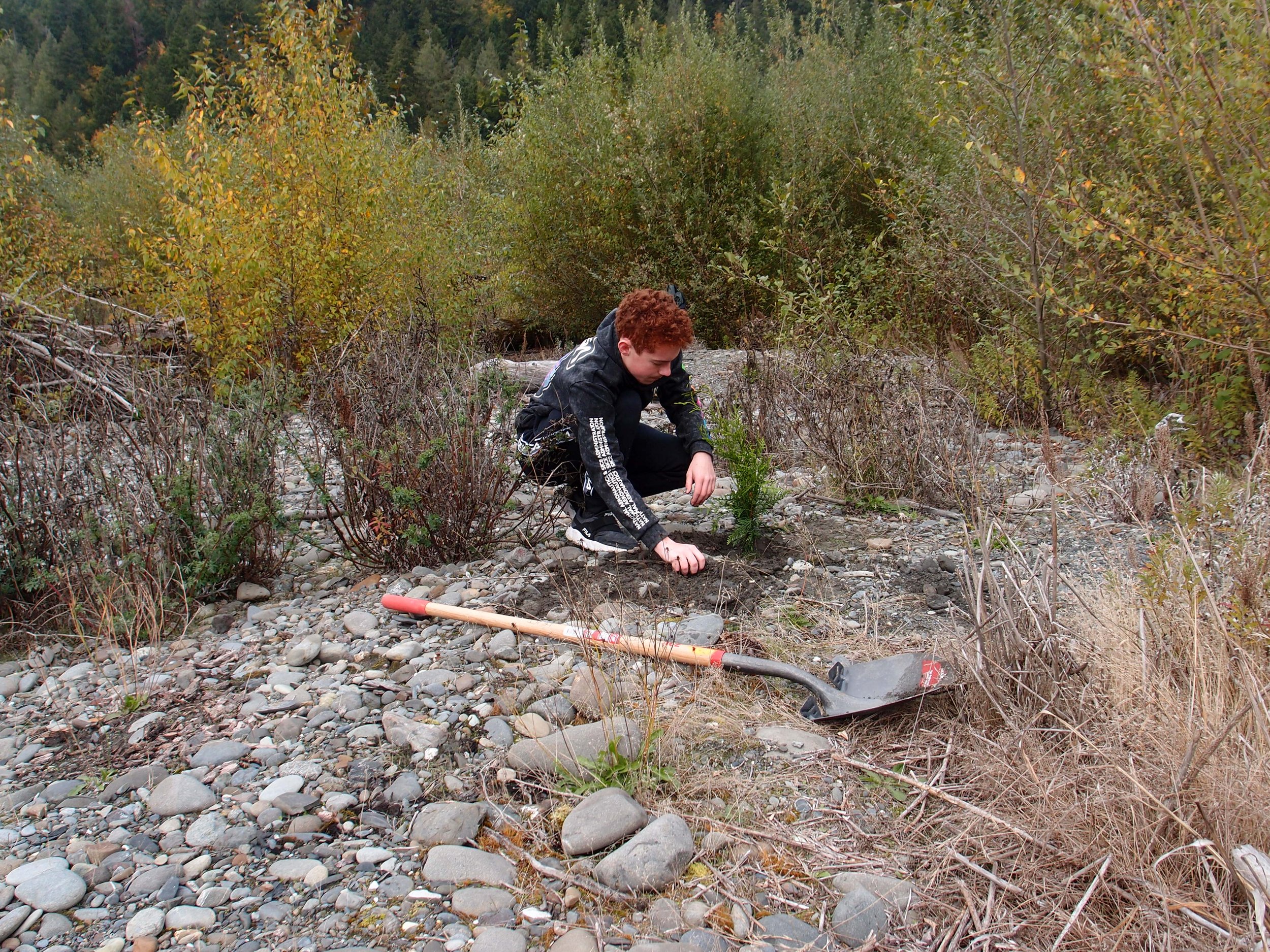
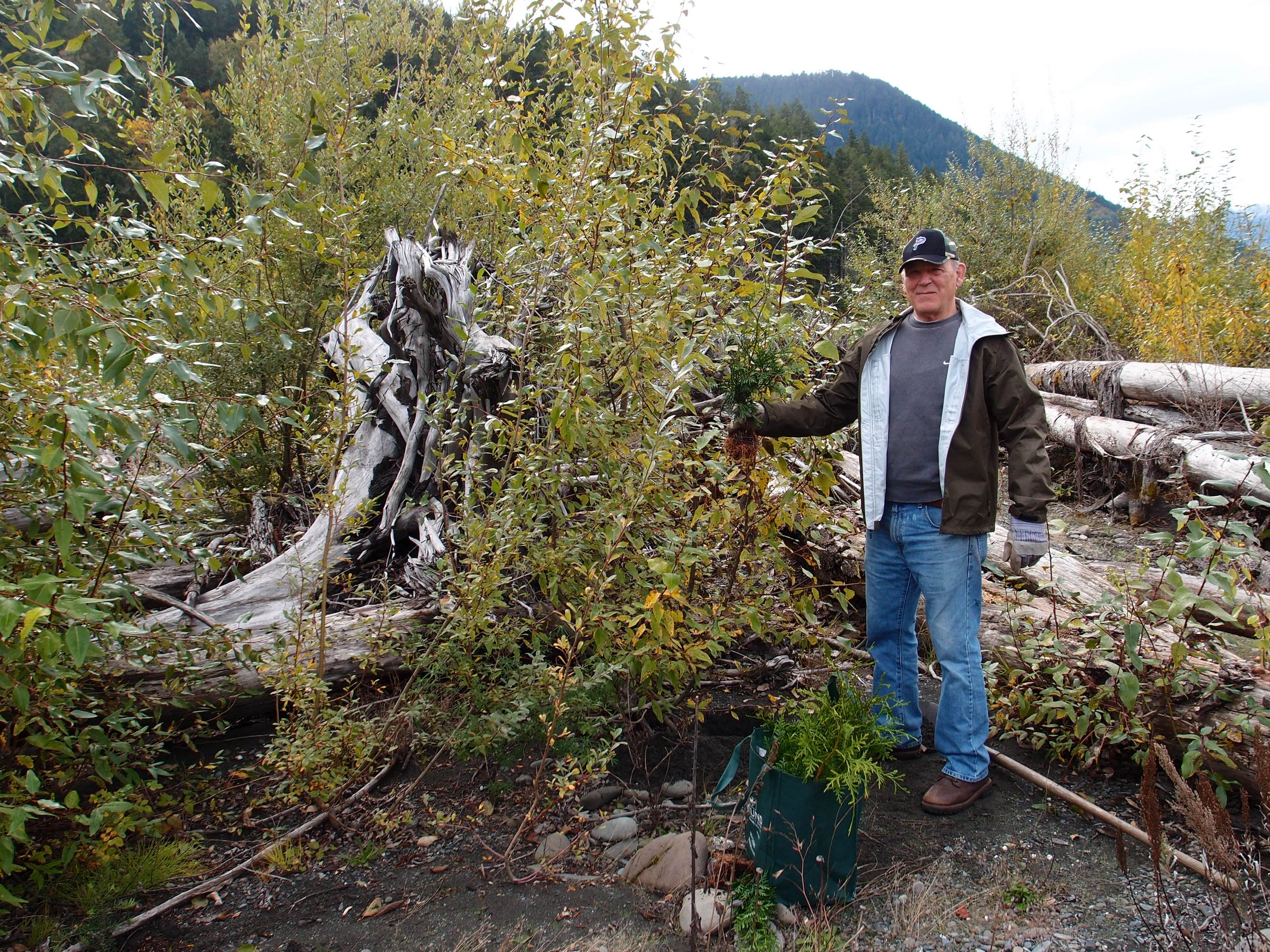

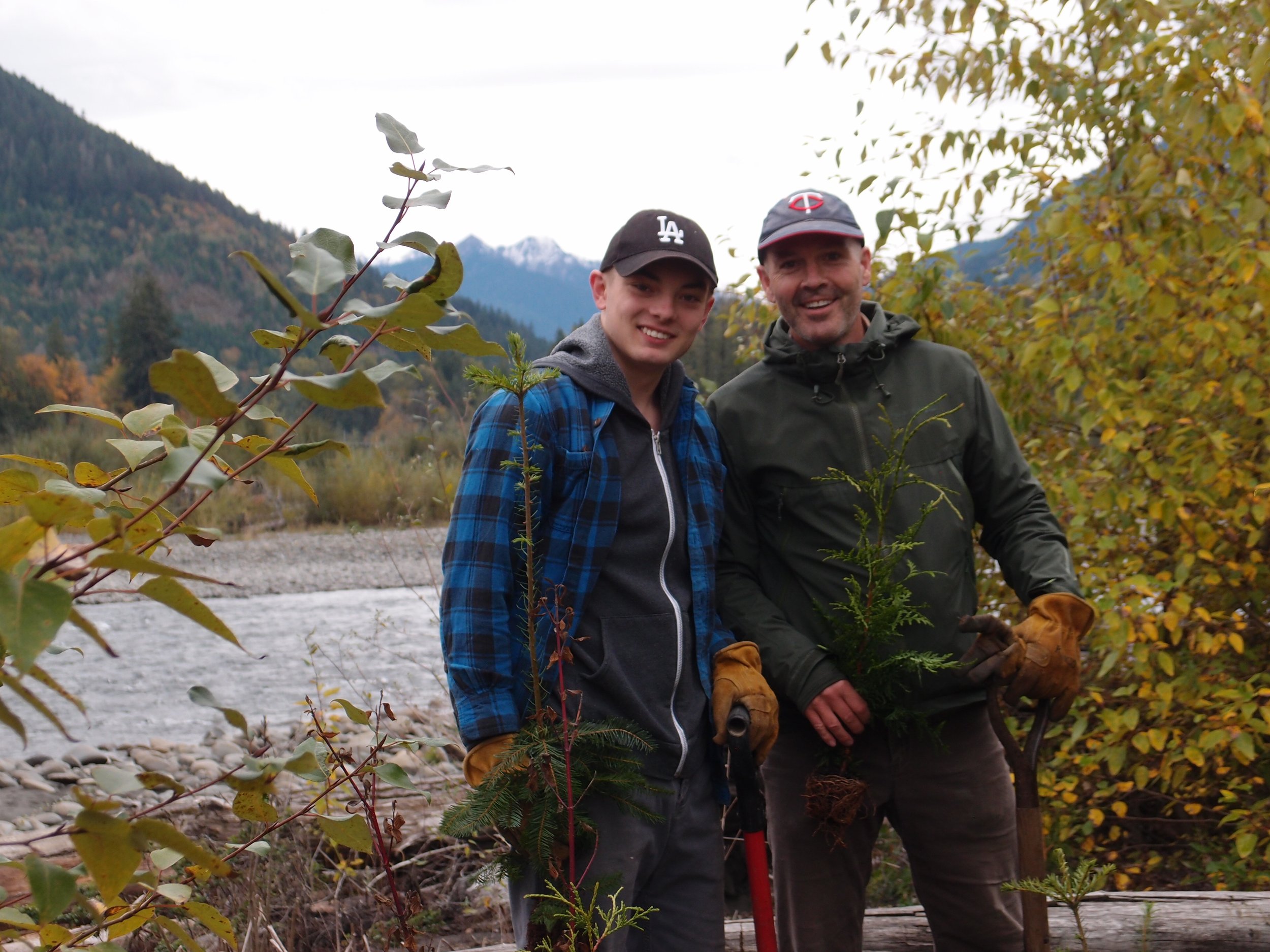

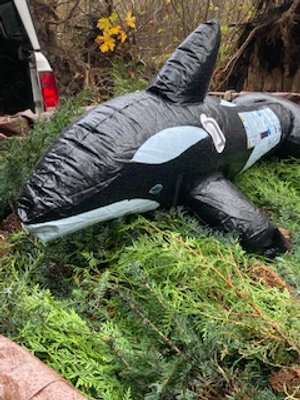
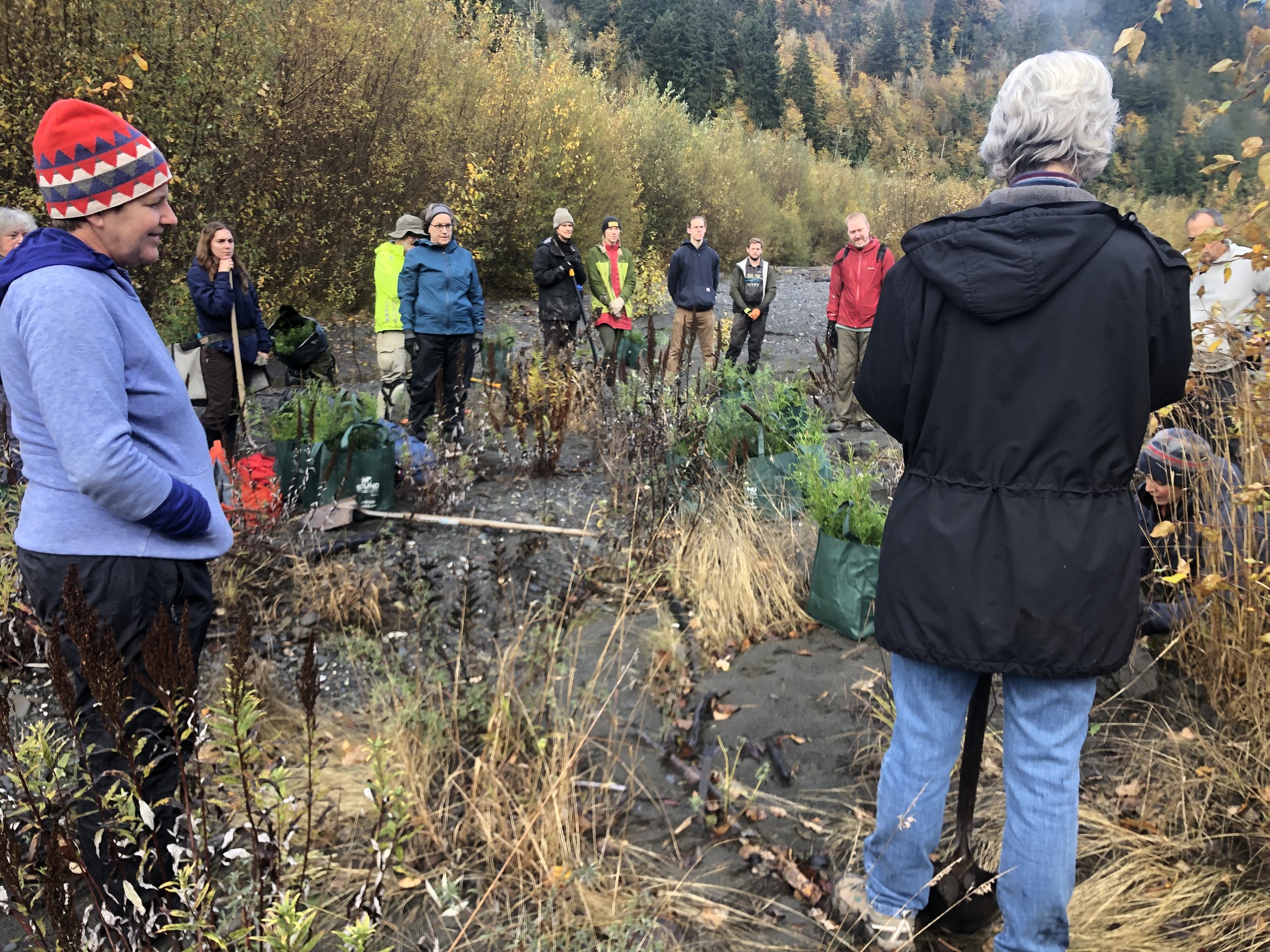
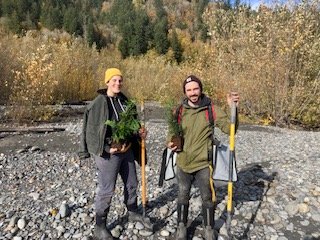
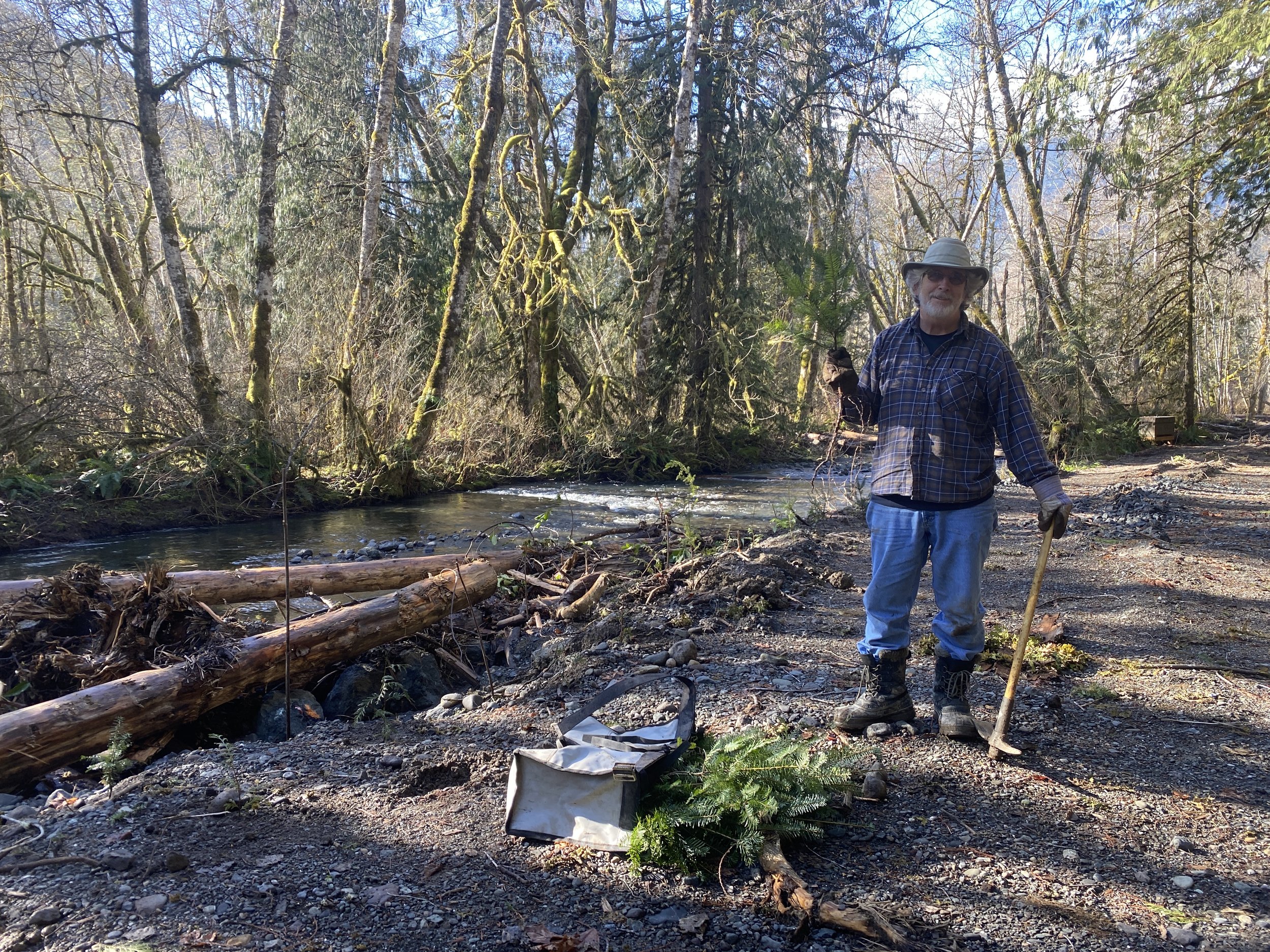
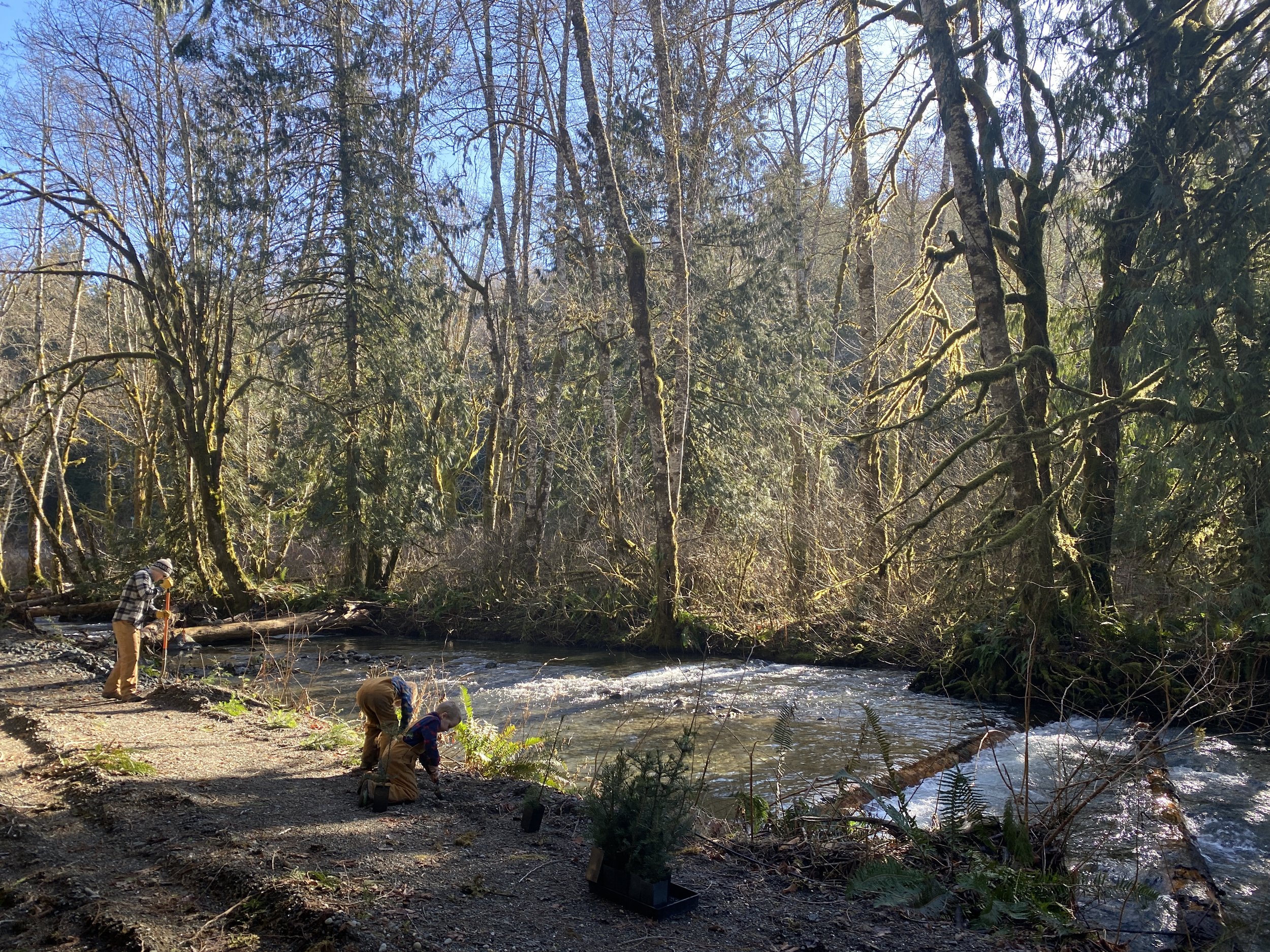
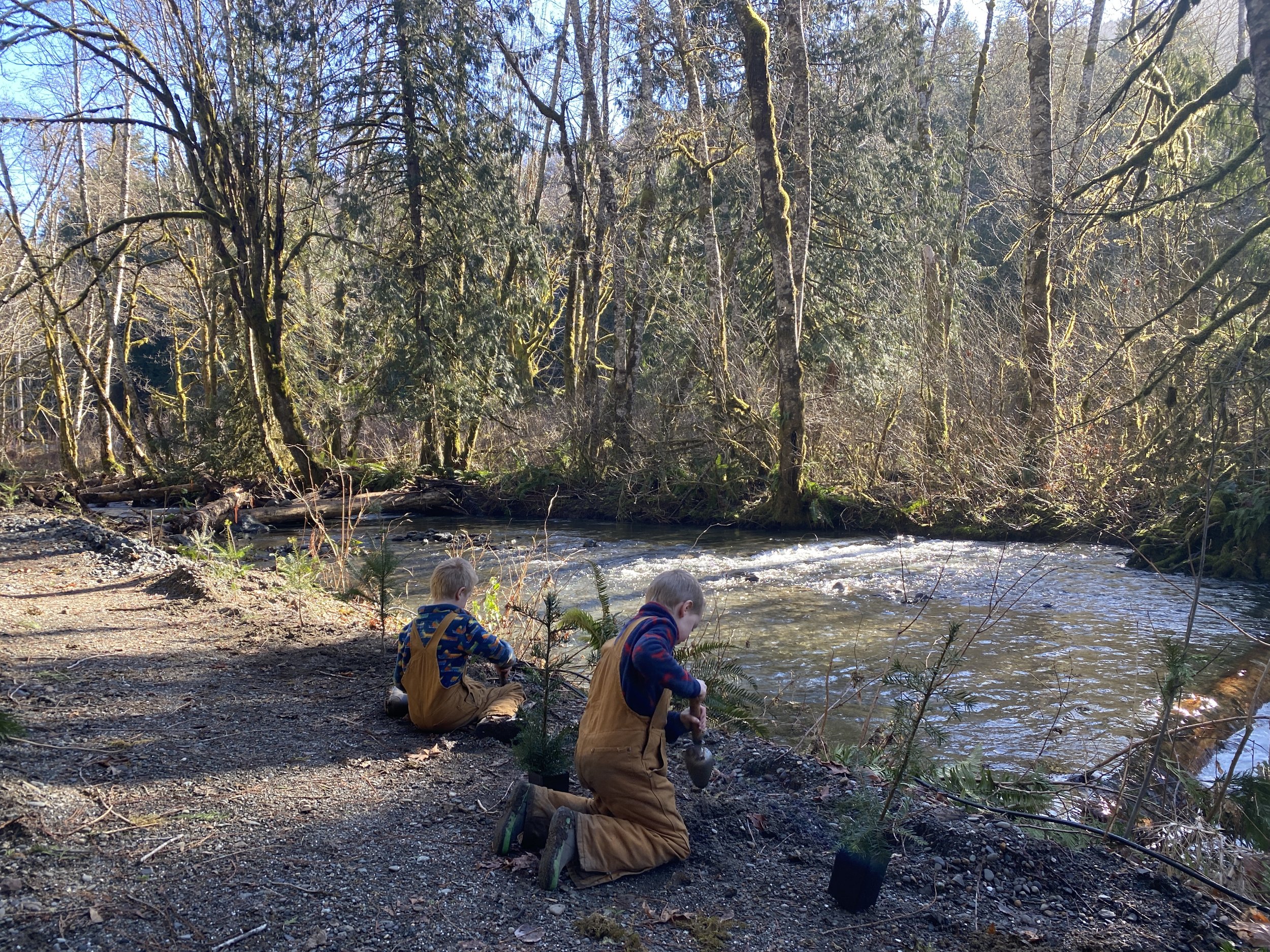
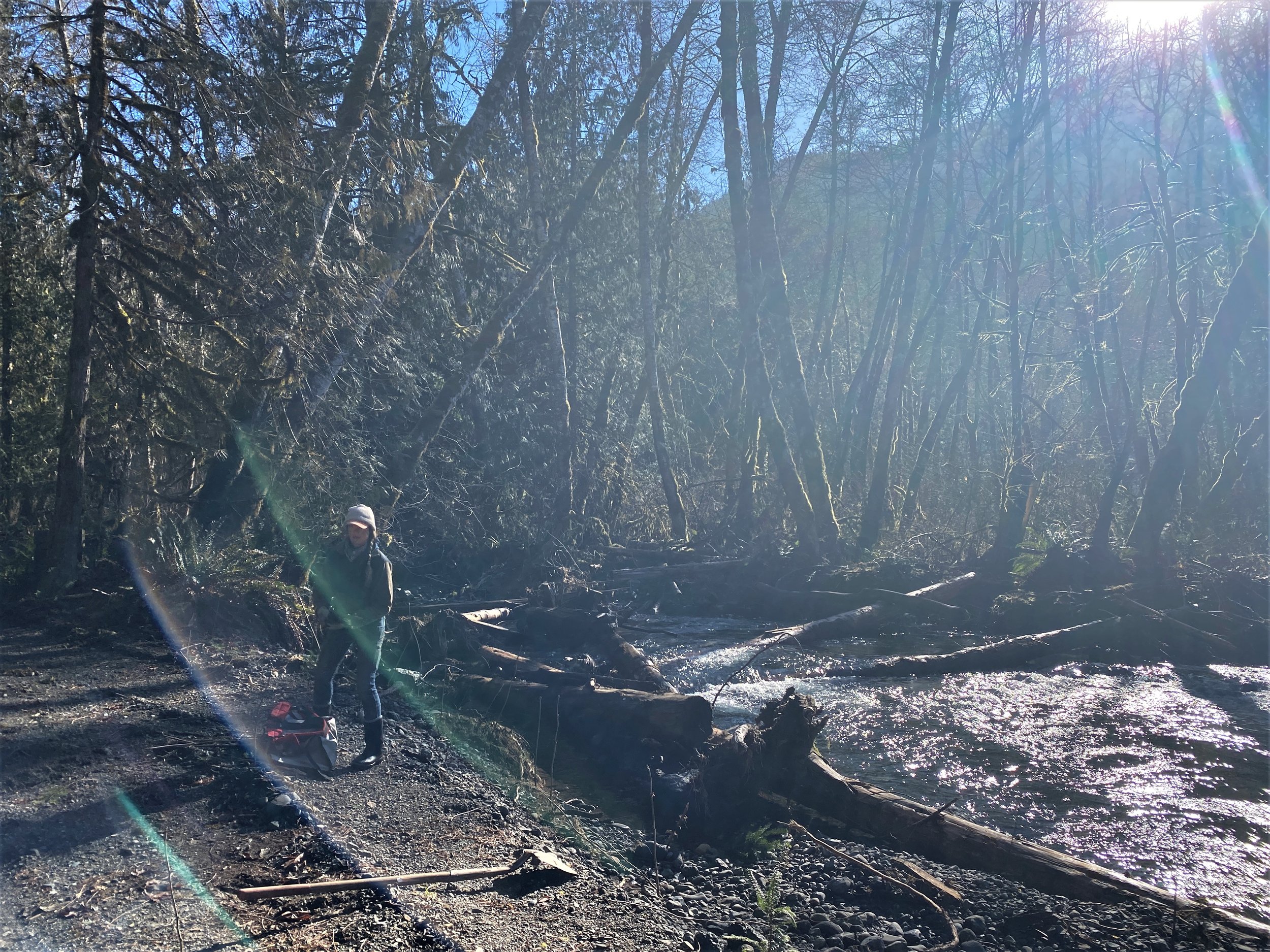




Little River Planting
In February and March of 2022, 14 volunteers helped Clallam Conservation District and the Lower Elwha Klallam Tribe plant 735 native trees and shrubs along Little River, an important tributary to the Elwha River that outlets just above the Highway 101 Elwha River Bridge. In time, these trees will provide vital shade to the river, and contribute large woody debris to create valuable instream fish habitat.
This planting helps complete part of a large restoration project the Lower Elwha Klallam Tribe completed in 2020 that involved installing logs jams in Little River to provide natural in stream features that salmon need to survive. These log jams will slow the water velocity, helping to create resting pools for salmon, and feeding and spawning habitat.
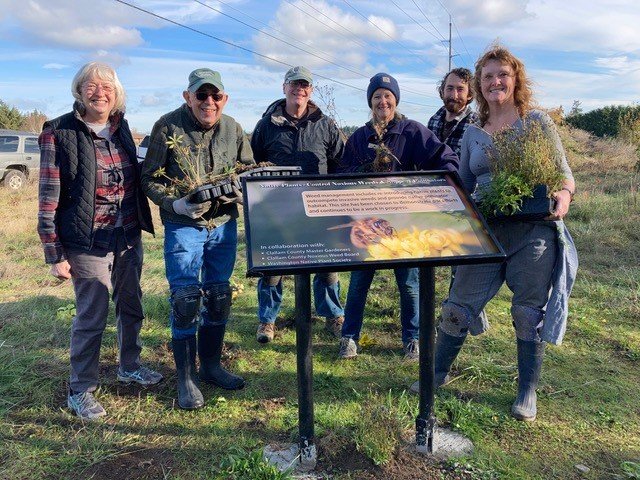
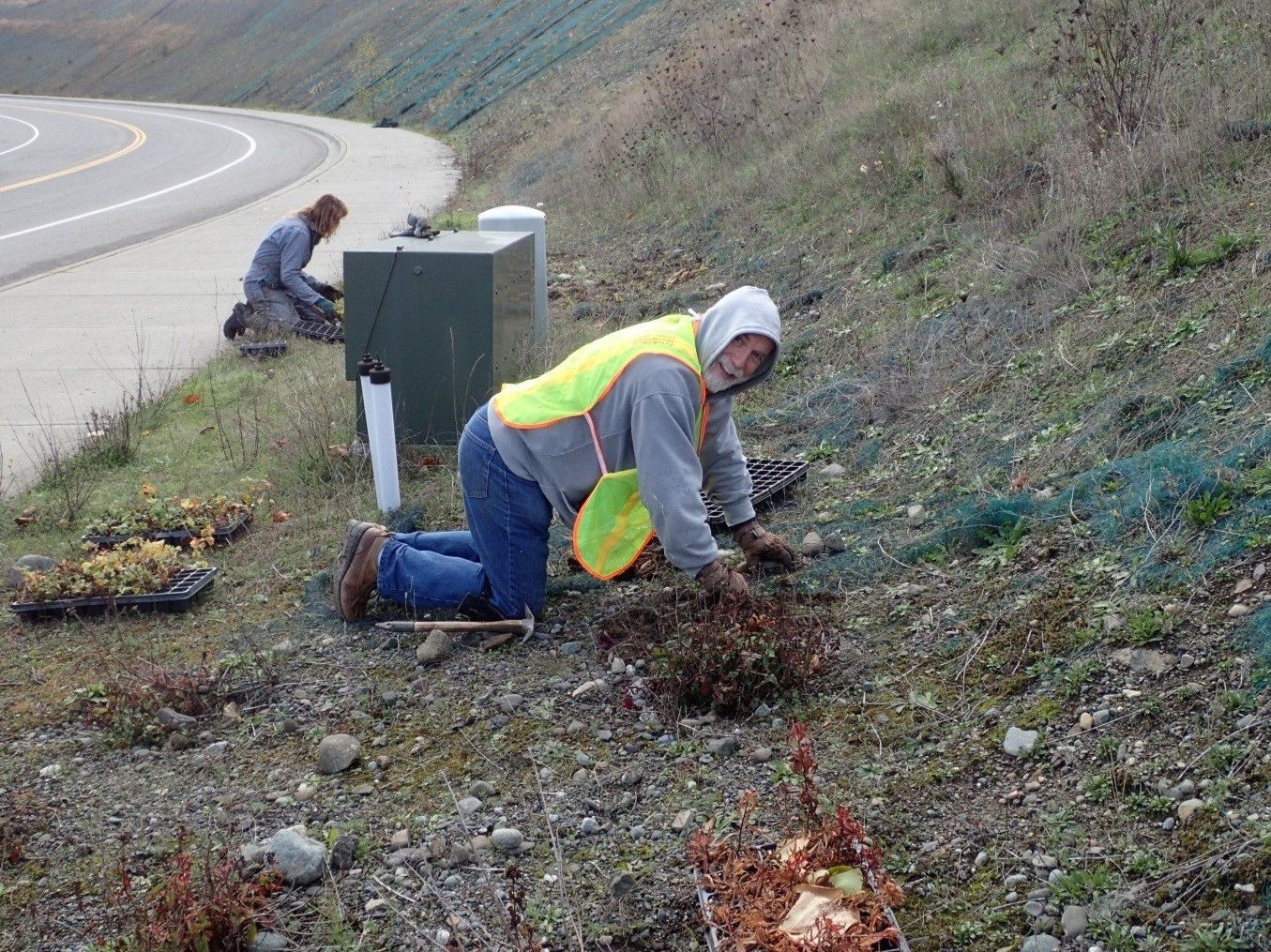
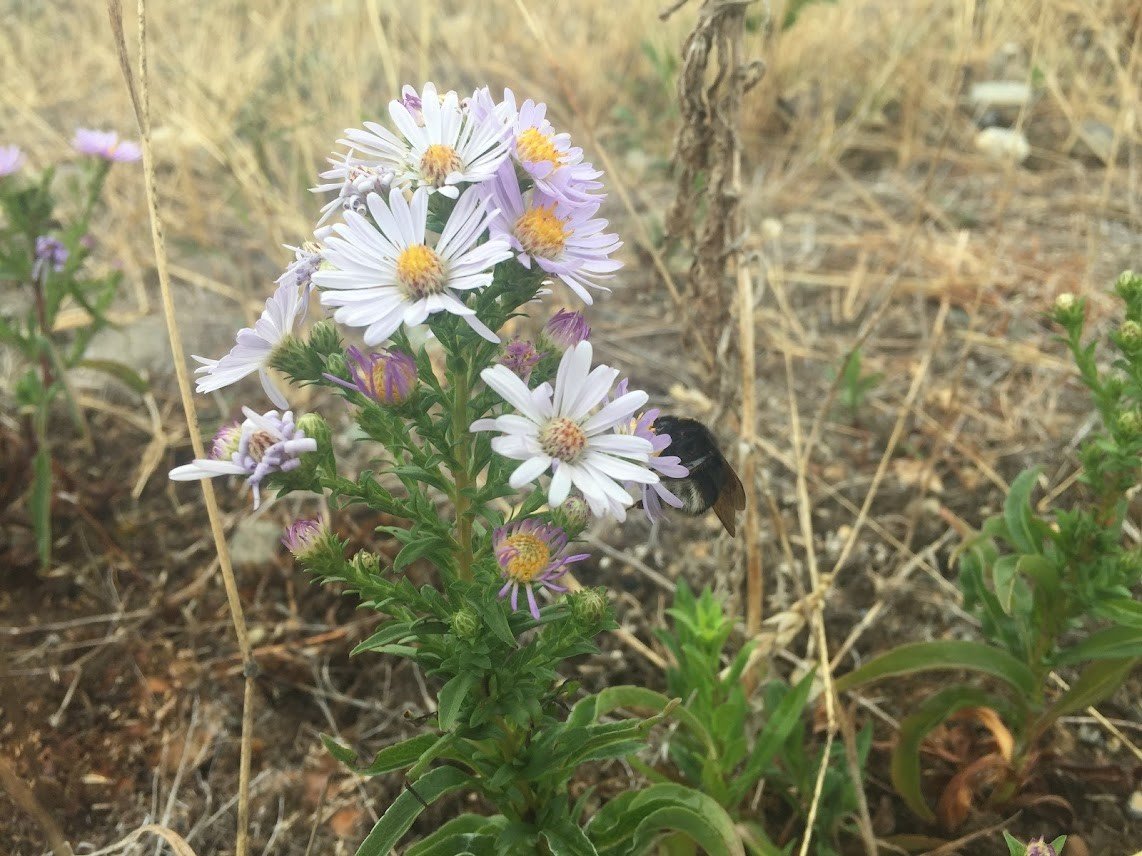
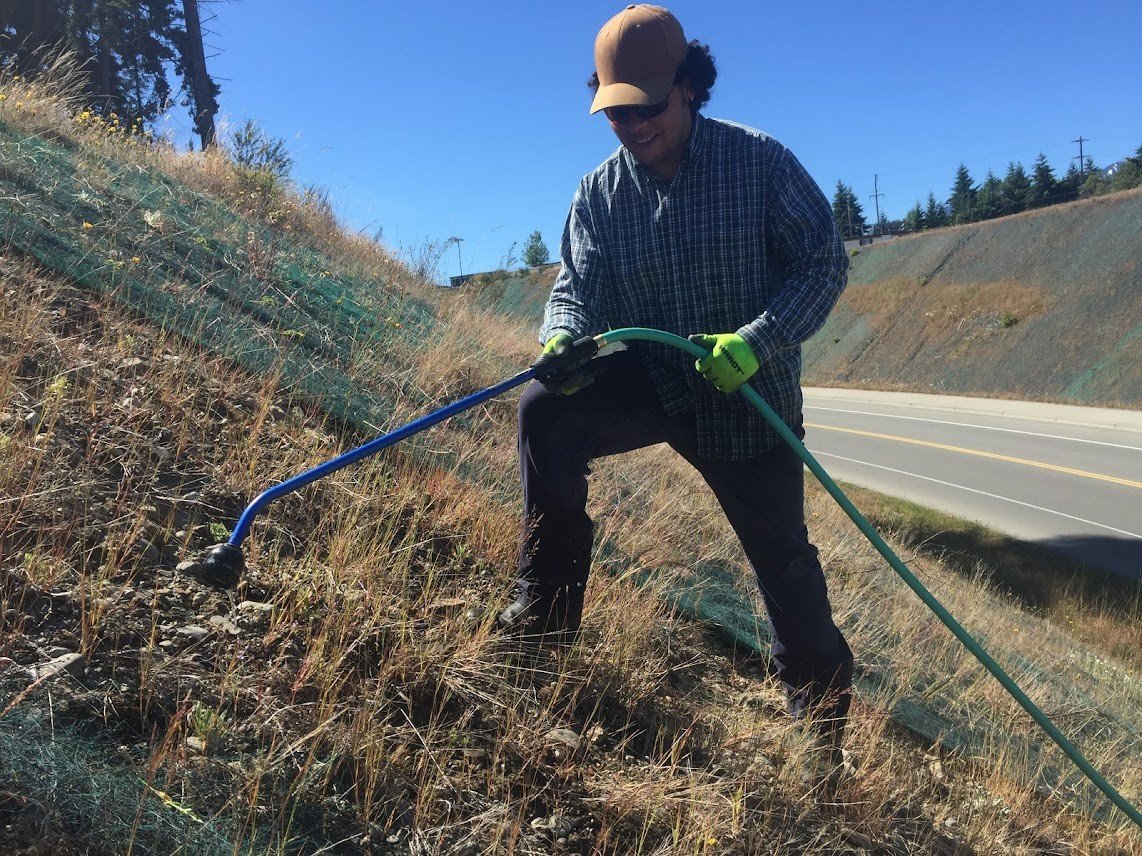
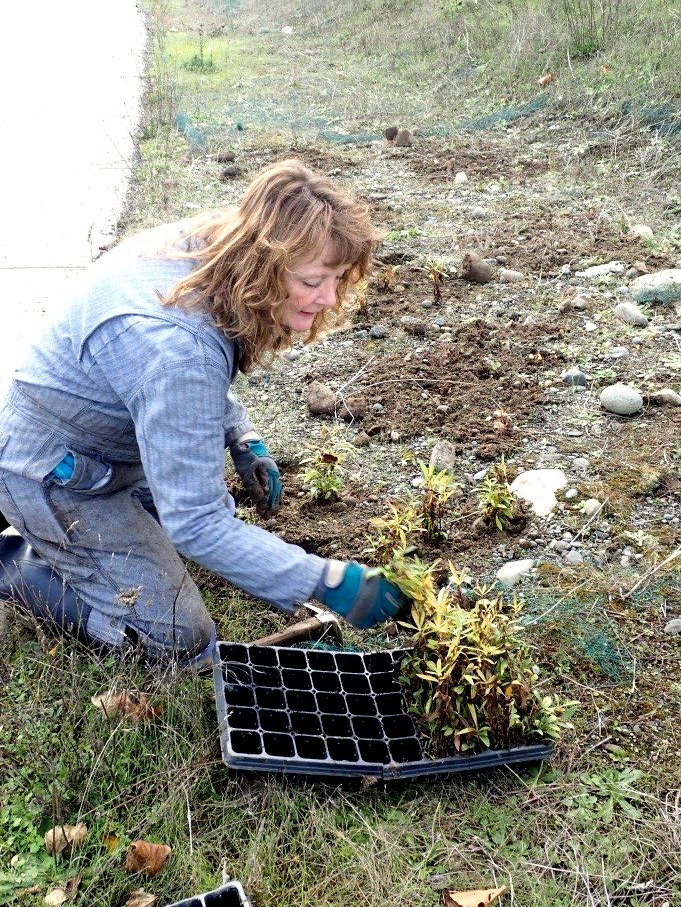
Planting Native Species for Pollinators
In November on 2021, we partnered with Clallam County Noxious Weed Department to help recruit volunteers to plant at the bottom of Deer Park, and along a berm on the Olympic Discovery Trail (ODT) located between Lewis and Spring Roads in Agnew. 17 volunteers donated their time to help plant thousands of native plants.
The areas targeted by these planting projects were disturbed soils, which, if left unplanted, would be a vector for invasive weeds to begin growing. Several years of planting these areas have helped create native flowering habitat that supports pollinator species. These plants will continue to need some help until they are well established, so we will be recruiting volunteers for weekly watering’s on Thursday’s beginning in May of 2022 through late September.
For more information on choosing plants to help create pollinator habitat, we encourage you to view “Bring Back the Pollinators”, located under our past Native Landscaping Webinars. The Xerces Society also has excellent information on pollinator habitat specific to the Pacific Northwest Region.
